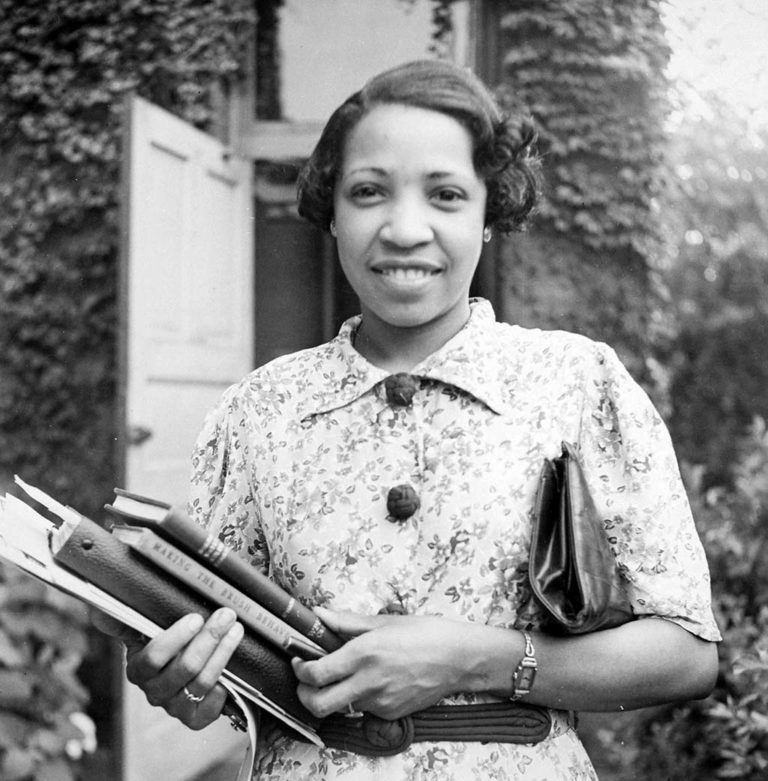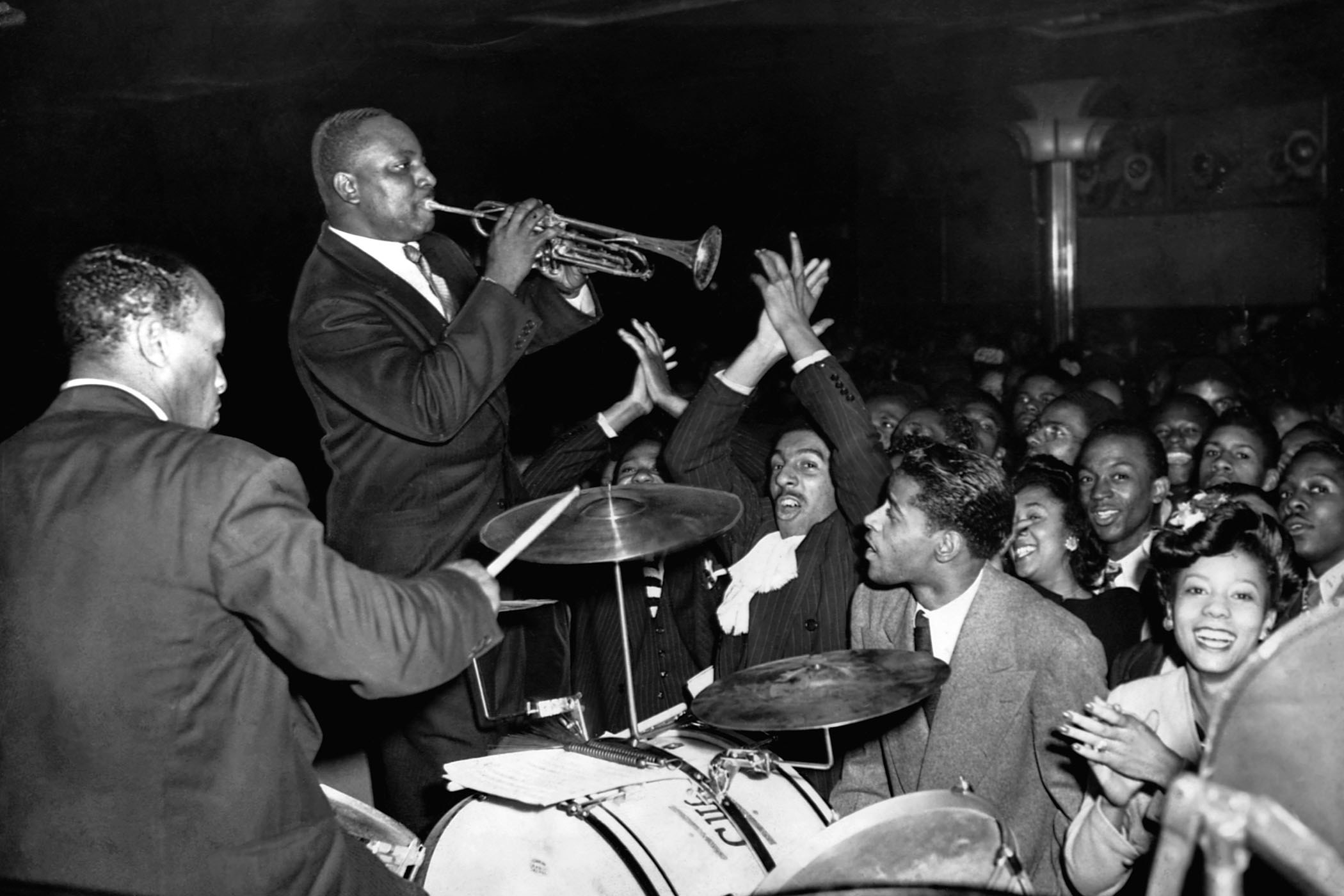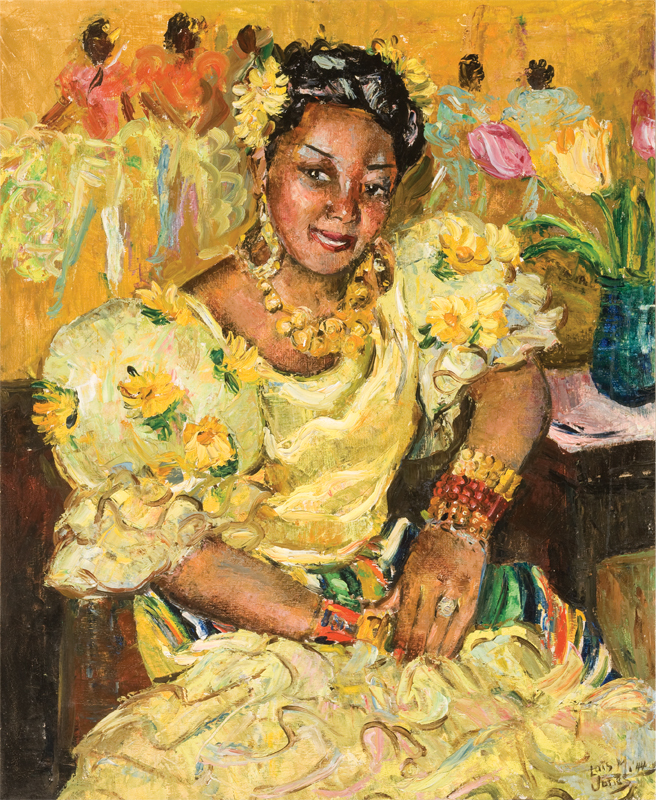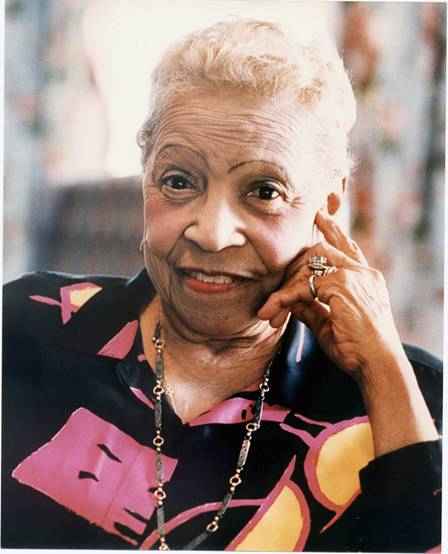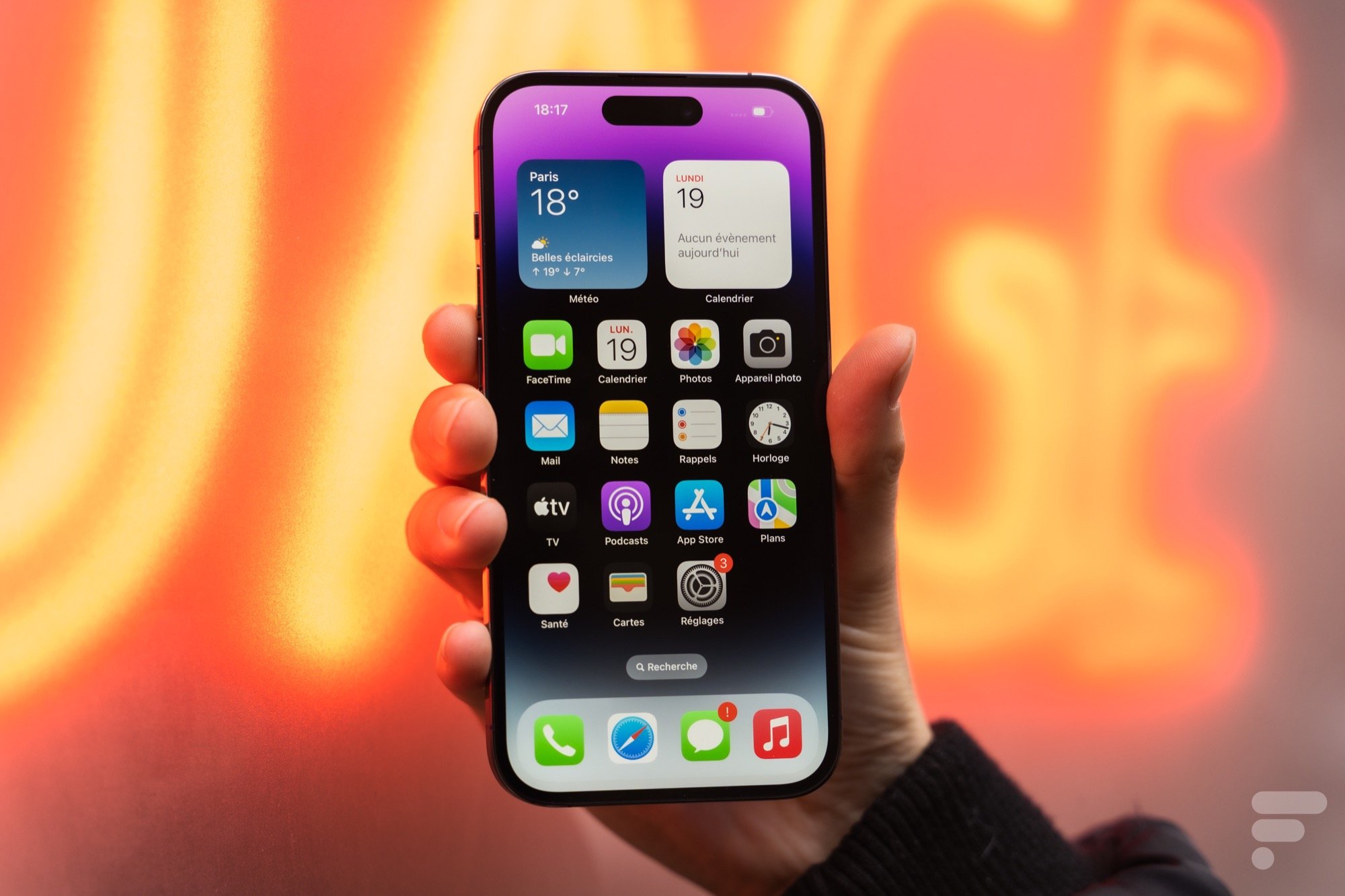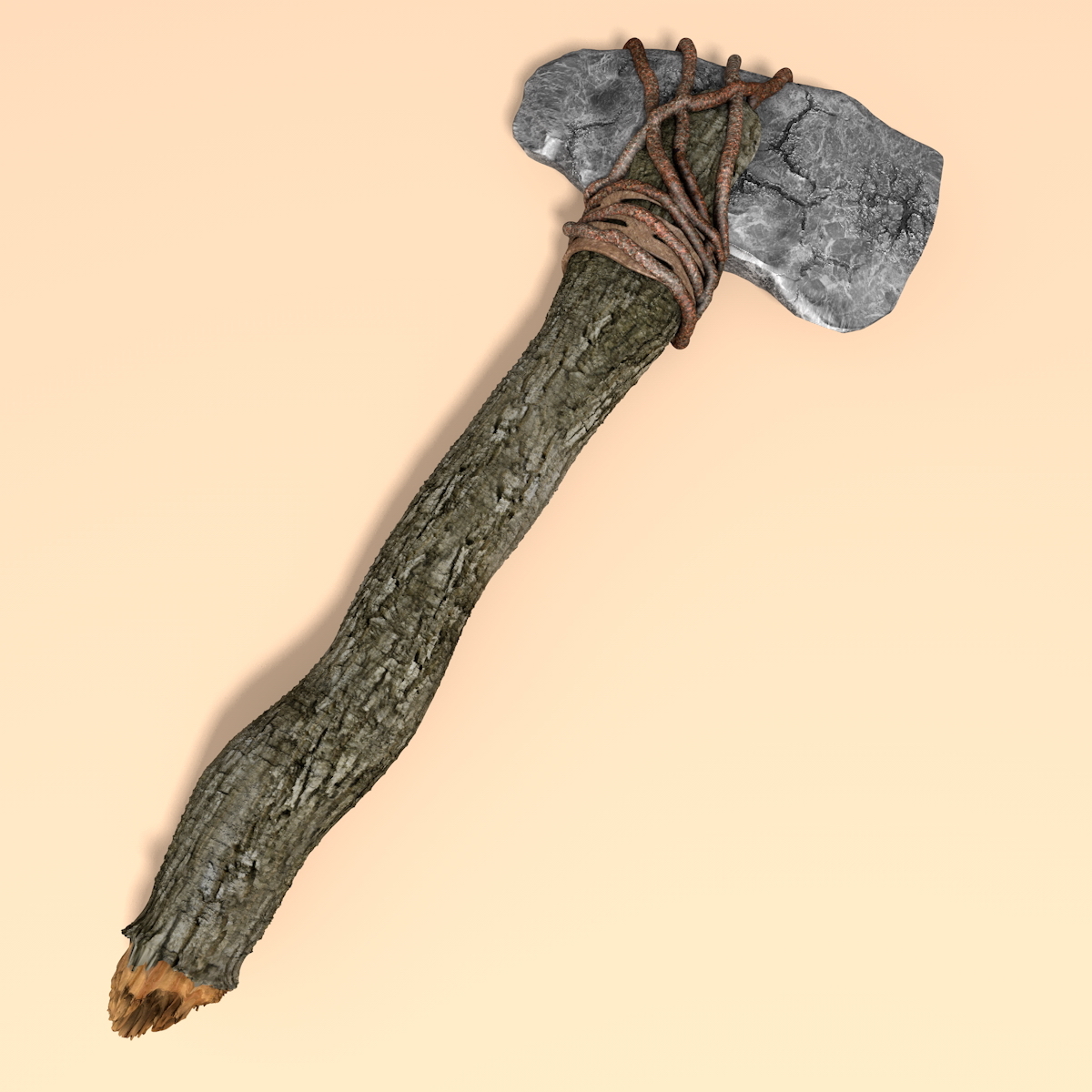American Babylon: Part 6 (redmoonrising.com)
Pro-God, Pro-Human Life, anti-New World Order, Anti-Nefarious Secret Societies, Pro-Civil Liberties, anti-Torture, anti-National ID Card, Pro-Family, Anti-Neo Conservativism, Pro-Net Neutrality, Pro-Home Schooling, Anti-Voting Fraud, Pro-Good Israelis & Pro-Good Palestinians, Anti-Human Trafficking, Pro-Health Freedom, Anti-Codex Alimentarius, Pro-Action, Anti-Bigotry, Pro-9/11 Justice, Anti-Genocide, and Pro-Gun Control. My name is Timothy and I'm from the state of Virginia.
Sunday, March 31, 2024
Spring 2024 Par 5.
Fashion Part 1
Creativity is certainly synonymous with human intellectual power. Fashion is so common among the human consciousness that we experience it in every day of our lives. From baby clothes to the clothing found among elderly human beings, fashion represents a major part of our human identities. It can inspire us to work out or it can make us be aware of the diverse cultures of the world in a crisp fashion. Subsequently, fashion is not just ubiquitous involving wardrobe. It is found in cultures worldwide too. When cheerleaders celebrate scores, fashion is in abundance. When there are Olympic champions on stage (like Allyson Felix and Carmelita Jeter during the 2012 London Summer Olympics), their country's flags and apparel outline how much they love the gift of athletics too. Widespread, encompassing items like footwear, cosmetics, accessories, jewelry, pants, dresses, shirts, coats, and other manner of clothing are enriched by the multifaceted composition of fashion culture. Fashion designers of all colors and backgrounds (like Ann Lowe, Patrick Kelly, June Ambrose, etc.) have brought their genius to present unique forms of patterns, innovations, and a sense of purpose to develop society in general. There is a business side to fashion. In the fashion atmosphere, people readily deal with corporations, contracts, copyright laws, inventory, property rights, modeling deals, and other economic components of fashion. One secret to great fashion doesn't just deal with a specific background of an item but the small components of an item's exterior like a different design or color (that can make the item more powerful in its cosmology). The journey continues, it is precisely the time to investigate more of how the Universe functions.
The Early History of Fashion
Fashion existed since the start of human history. Archaeologists found handmade sewing needles that have been dated to about 40,000 years ago. There were needles discovered from the Soltrean culture which existed in France from 19,000 to 15,000 B.C. There was evidence of dyed flax fibers from ca. 36,000 B.C. which was found in a prehistoric cave in the Republic of Georgia. Weaving was found in Dolni Vstonice in the Czech Republic in the form of impressions of textiles and basketry plus nets on pieces of clay in ca. 27,000 B.C. We know about the famous Venus figurines in ca. 25,000 B.C. in Western Europe. Early humans used clothes to be warm and dry. Some might have used them for spiritual or celebration purposes too. Humans, Neanderthals, and Cro-Mangnon people used clothing during ancient times. Clothing and equipment have been used with hides, bones, antlers, and feathers from many animal species for design and aesthetic purposes. Some people wore clothes with goat skin, bear hide, and other forms of material. One of the earliest civilizations of the Neolithic Age was the Sumerian civilization with tons of fashion culture. Sumerian people used dye textiles. Men and women wore skirts or tunics called Kaunakes. The length of the kaunake depends on the hierarchical rank in their society. The shorter the length of the skirt, the lower an individual was in society. The longer the length of the skirt, the higher an individual was in society. There were slaves, soldiers, servants, and royalty plus priests. In ancient Sumeria, women wore dresses with longer fabrics too. There was gold jewelry too with carnelian, a reddish-orange gemstone. The wheel, various systems of measurement, the cuneiform, cities, plumbing, and other inventions were in existence in ancient Sumeria.
In ancient Egypt, there were many textile materials with animal-based fabrics. Many of the priests had high-level products. The upper class had finer linens shown in statues and paintings. The cheaper and thicker linen was used by the lower class and the working class of ancient Egypt. Ancient Egyptians wore tunics and capes. Skirts were worn by women. Sandals had leather for shoes. Ancient Egypt had perfumes, makeup, and other forms of complex hygiene care. Some people shaved their heads and wore wigs. Some children wore one loc of hair on the right side of their head. Many ancient Egyptians had metal discs, ornaments, and body decorations plus piercings. Gold from Nubia was used in jewelry along with emeralds, pearls, and lapis lazuili. In ancient Minoan culture, the loincloth was worn by men and women. Dresses were long during that time. Many Minoan men wore their hair long with braids and knots. In ancient Israel, ancient Israelites wore clothing from the skins of animals. Some priests wore tassels or fringes. Scandals were usually made up of wood and leather straps not being worn in the house or in the sanctuary. Some women wore head coverings.
In ancient Greece, they wore chiton, peplos, himation, and clamys. Many of them used different fabrics. The women were wearing peplos. Ancient Roman fashion is well known via art, literature, and archaeology. We know that the dress customs of ancient Etruscan people predate the classical Roman civilization. The Etruscan culture existed by 1200 B.C. in Italy. Many Romans wore toga and tunics. Many women wore dresses, bikinis, and other clothing. The bridal veil and the wedding ring existed in ancient Roman wedding attire. In ancient India, people wore sari, turbans, and dhoti. Cotton was used in the Harappan Era as early as 2,500 B.C. The Harappan civilization lasted from ca. 3300 B.C. to 1300 B.C. The Vedic period (from ca. 1750 - 500 B.C.) had garments for men and women having a single cloth wrapped around the body and over the shoulder. There were linen and cotton used in the Maurya Empire (322 - 185 B.C.).
Epilogue
Fashion like music is a universal language. During the first eras of human history, people used fashion as a means to survive in changing environments and for other purposes. As the Ice Age ended and temperatures rose up in the Neolithic Age, human beings formed many civilizations on rivers, in forests, in mountains, and in other locations in Africa, Europe, Asia, Oceania, the Americas, and Australia. With the advent of new sewing equipment and various forms of massive technologies, ancient human beings used clothing not only to help them live in the world. Some focused on aesthetic qualities. Some wore clothes based on socioeconomic status like the super wealthy, the middle class, the working class, and the poor wore different styles of clothing. Also, accessors have grown from shoes, earrings, necklaces, and other forms of hats that denoted the diversity of the culture of humanity. As fashion grows into history, we shall learn more about the legacies of fashion icons like June Ambrose, Virgil Abloh, Andre Leon Talley, Diana Ross, Cecily Tyson, Naomi Campbell, Telfar Clemons, Aaliyah, Josephine Baker, Dapper Dan, Sami Miro Vintage, Aurora James, Christopher John Rogers, Tia Adeola, Felicia Noel, Anifa Mvuemba, Brandon Blackwood, and other human beings who make it their business to advance fashion excellence.
Conclusion (Spring)
Vice President Kamala Harris recently gave an impassionate speech at Selma, Alabama in a historic speech. She was near the Edmund Pettus Bridge where Bloody Sunday took place 59 years ago. This was when innocent men, women, and children were brutally assaulted unjustly by crooked police officers, many of them were on horseback. John Lewis almost died in the incident, and he was assaulted during the Freedom Rides era, which was years prior. Selma was the place where people wanted to fight for voting rights as it is the birthright of Americans. Kamala Harris made it explicitly clear that the suffering of the Palestinian people must be recognized, and an immediate ceasefire for six weeks must happen. She also said that the tragedy of Palestinians dying and the massive number of people in Gaza starving is not a path that we should take. She reaffirmed Israel's right to defend itself against Hamas (which is a terrorist organization), but she wanted Israel to do more to send humanitarian aid to the Palestinian people in Gaza, including opening up for route for food to go into areas. Some of her statements in public went far and beyond what President Biden has said in public about the Middle Eastern crisis. At the end of the day, either Biden or Trump will be President. Vice President Kamala Harris condemned the suppression of voting rights in America now in 2024, the agenda of whitewashing black history, and the harm done to the rights of other human beings in America. In November 2024 after the Paris Olympics, I will vote for democracy.
By Timothy
Spring 2024 Part 4.
The Glory of Africa Part 12
As we live near the quarter-century mark of this new 21st century, we witness a new era of our time. I first started this series in 2009 and now 15 years later, my core convictions remain the same. Also, we realize the massive importance of Africa in our lives and our consciousness. Ever since I was a young child, I always took a great interest in the culture and diverse human beings of Africa. Africa is filled with thousands of languages, tons of ethnic groups, a diverse history, and it is the origin of all human life. There are many misconceptions and false stereotypes that some people have of Africa. One false misconception is that all of Africa is filled with stereotypical images of jungles with lax civilizations. The truth is that modern technological achievements flourish in Africa like next-generation laptop computers, light rail, aircraft, smartphone devices, and a new generation of Africans who are dedicated to justice in a forthright, humble fashion. Thousands of years ago, the first humans lived in Africa. They traveled throughout the whole world from the Americas to Antarctica. In that time period, we humans have made inventions, traveled to the Moon and back to Earth, and solved many problems of the globe. Not to mention that Africa is a blessed land with some of the most spiritual people on Earth. Like always, problems exist in Africa, but we have the power to solve these issues with creative thinking along with progressive solutions to those issues. I am an African American, so my black African heritage will always be part of my physical appearance, my DNA, and my overall heritage. Us black people deserve our flowers, not from people who hate our existence. We will honor our flowers given to us by people who love us. This black soul among my people ultimately comes from ALMIGHTY GOD, who created the Universe. Today, the Glory of Africa shines bright for the whole Universe to witness in a brilliant fashion.
The Mali Empire
One of the most important parts of black African history deals with the Mali Empire. It has a long important history that should be researched, analyzed, and learn lessons from. The empire lasted by ca. 1226 to 1670 A.D. It was founded by Sundiata Keita (ca. 1214-ca. 1255 A.D.). Many people know about the wealth of its rulers, especially Mansa Musa (Musa Keita). It was the largest empire in West Africa at its zenith. It influenced Western Africa in its language, laws, and customs. The Mali Empire started a small Mandinka kingdom at the upper reaches of the Niger River, around the Manding region. It grew during the 11th and 12th centuries as the Ghana Empire or Wagadu. Wagadu declined and trade routes shifted southward. The first ruler for which there is accurate written information is Sundiata Keita, a warrior-prince of the Keita dynasty who was called upon to free the local people from the rule of the king of the Sosso Empire, Soumaoro Kanté. The conquest of Sosso in c. 1235 marked the emergence of Mali as a major power. After the death of Sundiata Keita in ca. 1255, the kings ruling Mali had the title of mansa. In c. 1285 Sakoura, a former royal court slave, became emperor and was one of Mali's most powerful rulers, greatly expanding the empire's territory. He made a pilgrimage to Mecca during the reign of Mamluk Sultan An-Nasir Muhammad (r. 1298–1308) but died on his voyage home. Mansa Musa took the throne in c. 1312. He made a famous pilgrimage to Mecca from 1324 to 1326, where his generous gifts and his expenditure of gold caused significant inflation in Egypt. The languages spoken in the Mali Empire were Mandinka, Fulani, Wolof, and Bambara. Many black Americans are descendants from people of the Mali Empire.
Maghan I succeeded him as mansa in 1337 but was deposed by his uncle Suleyman in 1341. It was during Suleyman's 19-year reign that Ibn Battuta visited Mali. Suleyman's death marked the end of Mali's Golden Age and the beginning of a slow decline. The Tarikh al-Sudan records that Mali was still a sizeable state in the 15th century. At that time, the Venetian explorer Alvise Cadamosto and Portuguese traders confirmed that the peoples who settled within Gambia River were still subject to the mansa of Mali. Upon Leo Africanus's visit at the beginning of the 16th century, his descriptions of the territorial domains of Mali showed that it was still a kingdom of considerable size. However, from 1507 onwards neighboring states such as Diarra, Great Fulo, and the Songhai Empire chipped away at Mali's borders. In 1542, the Songhai invaded the capital but were unsuccessful in conquering the empire. During the 17th century, the Mali Empire faced incursions from the Bamana Empire, who ultimately sacked and burned the capital in 1670. The Mali Empire rapidly disintegrated, being replaced by independent chiefdoms. The Keitas retreated to the town of Kangaba, where they became provincial chiefs.
Ancient Egypt
Ancient Egypt is an ancient civilization found on the Nile River being an African civilization. Egypt is part of Africa, regardless of what any revisionists say. It lasted from ca. 3150 B.C. to 30 B.C. Its history has been filled with research and a constant contribution to humanity like STEM fields, cuisine, fashion, architecture, writing, music, spiritual views, medicine, literature, etc. The civilization developed in the Nile River. The ancient Egyptian Empire by the New Kingdom expanded to Nubia and much of the Levant at its peak before having its slow decline. Ancient Egypt survived by having its ability to adapt to the conditions of the Nile River valley for agriculture, trade, and transportation. The flooding caused people to adjust their crops and develop their irrigation systems to make their lands more fertile. Ancient Egyptian History has many eras like Early Dynastic Period, the Old Kingdom, the First Intermediate Period, the Middle Kingdom, the Second Intermediate Period, the New Kingdom (at its peak), the Third Intermediate Period, and the Late Period. The fertile floodplain caused people to have an agricultural economy and a centralized system of government. Nomadic people lived in the Nile valley about 120,000 years ago during the Middle Pleistocene era. The region became hotter and drier and people lived in the Nile River. During the Pre-Dynastic period, there was pottery in 5,500 B.C. along with the Badarian culture that came from the Western Desert with ceramics of high quality, stone tools, and usage of cooper. Recent archaeological evidence has suggested that the Tasian and Badarian Nile Valley sites were a peripheral network of earlier Northeast African cultures that featured the movement of Badarian, Saharan, Nubian, and Nilotic populations.
Later, ancient Egypt saw the Naqada culture (from Naqada I to Naqada III). There was obsidian that came from Ethiopia and trade with the Levant and Mesopotamia in general during the 3600's B.C. The Nagada culture (filled with decorative stone vases, cosmetic palettes, jewelry, and writing symbols that would evolve into the full system of hieroglyphs) traded with Nubia, the Near East, and the cultures of the eastern Mediterranean. The Early Dynastic Period of ancient Egypt lasted from cs. 3150 B.C. to 2686 B.C. This was the time when the Sumerian Akkadian cultures of Mesopotamia and ancient Elam were growing. According to third-century Egyptian priest Mantheo, the first King of this Dynasty was Menes (who was believed to have united the two Kingdoms of Upper and Lower Egypt). Menes may be King Narmer. By this time, the capital of ancient Egypt was in the prominent city of Memphis. Ancient Egypt had pharaohs, labor power, and trade routes to the Levant. The strong institution of kingship developed by the kings served to legitimize state control over the land, labor, and resources that were essential to the survival and growth of ancient Egyptian civilization. The Old Kingdom from 2686 to 2181 B.C. saw tons of huge advances in architecture, art, and technology. The Great Pyramids of Giza and The Great Sphinx were created during the Old Kingdom. The Old Kingdom saw the vizier using state officials to collect taxes, handle crops, work on construction projects via peasants, and have a justice system to have peace and order.
With the rising importance of central administration in Egypt, a new class of educated scribes and officials arose who were granted estates by the king in payment for their services. Kings also made land grants to their mortuary cults and local temples, to ensure that these institutions had the resources to worship the king after his death. Scholars believe that five centuries of these practices slowly eroded the economic vitality of Egypt and that the economy could no longer afford to support a large, centralized administration. As the power of the kings diminished, regional governors called nomarchs began to challenge the supremacy of the office of king. This, coupled with severe droughts between 2200 and 2150 BC, is believed to have caused the country to enter the 140 years of famine and strife known as the First Intermediate Period. This period saw Egypt's central government gone. Local rulers existed to deal with resources and provinces became richer. By 2160 BC, rulers in Herakleopolis controlled Lower Egypt in the north, while a rival clan based in Thebes, the Intef family, took control of Upper Egypt in the south. As the Intefs grew in power and expanded their control northward, a clash between the two rival dynasties became inevitable. Around 2055 BC the northern Theban forces under Nebhepetre Mentuhotep II finally defeated the Herakleopolitan rulers, reuniting the Two Lands. They inaugurated a period of economic and cultural renaissance known as the Middle Kingdom (which lasted from 2134 to 1690 B.C.). The Middle Kingdom saw a new era of stability, prosperity, and the growth of culture (like art, literature, and large building projects).
Mentuhotep II and his Eleventh Dynasty successors ruled from Thebes, but the vizier Amenemhat I, upon assuming the kingship at the beginning of the Twelfth Dynasty around 1985 BC, shifted the kingdom's capital to the city of Itjtawy, located in Faiyum. From Itjtawy, the kings of the Twelfth Dynasty undertook a far-sighted land reclamation and irrigation scheme to increase agricultural output in the region. Moreover, the military reconquered territory in Nubia that was rich in quarries and gold mines, while laborers built a defensive structure in the Eastern Delta, called the "Walls of the Ruler", to defend against foreign attack. The Middle Kingdom focused on eloquent literature, personal piety, and new relief sculptures.
The last great ruler of the Middle Kingdom, Amenemhat III, allowed Semitic-speaking Canaanite settlers from the Near East into the Delta region to provide a sufficient labor force for his especially active mining and building campaigns. These ambitious building and mining activities, however, combined with severe Nile floods later in his reign, strained the economy and precipitated the slow decline into the Second Intermediate Period during the later Thirteenth and Fourteenth dynasties. During this decline, the Canaanite settlers began to assume greater control of the Delta region, eventually coming to power in Egypt as the Hyksos. The Hyksos were Semitic people who ruled Egypt during the Second Intermediate Period. They made their capital at Avaris. The ancient Egyptians paid tribute to the Hyksos. They used the composite bow and the horse-drawn chariot. The Theban Kings were trapped between the Canaanite Hyksos ruling the north and the Hyksos' Nubian allies, the Kushites, to the south. After years of vassalage, Thebes gathered enough strength to challenge the Hyksos in a conflict that lasted more than 30 years, until 1555 BC. The kings Seqenenre Tao II and Kamose were ultimately able to defeat the Nubians to the south of Egypt, but failed to defeat the Hyksos. That task fell to Kamose's successor, Ahmose I, who successfully waged a series of campaigns that permanently eradicated the Hyksos' presence in Egypt. He established a new dynasty and, in the New Kingdom that followed, the military became a central priority for the kings, who sought to expand Egypt's borders and attempted to gain mastery of the Near East.
The New Kingdom was during the peak of the ancient Egypt civilization. The New Kingdom pharaohs established a period of unprecedented prosperity by securing their borders and strengthening diplomatic ties with their neighbors, including the Mitanni Empire, Assyria, and Canaan. Military campaigns waged under Tuthmosis I and his grandson Tuthmosis III extended the influence of the pharaohs to the largest empire Egypt had ever seen. Beginning with Merneptah the rulers of Egypt adopted the title of pharaoh. Between their reigns, Hatshepsut, a queen who established herself as pharaoh, launched many building projects, including the restoration of temples damaged by the Hyksos, and sent trading expeditions to Punt and the Sinai. When Tuthmosis III died in 1425 BC, Egypt had an empire extending from Niya in northwest Syria to the Fourth Cataract of the Nile in Nubia, cementing loyalties and opening access to critical imports such as bronze and wood. The New Kingdom pharaohs began a large-scale building campaign to promote the god Amun, whose growing cult was based in Karnak. They also constructed monuments to glorify their own achievements, both real and imagined. The Karnak temple is the largest Egyptian temple ever built.
Around 1350 BC, the stability of the New Kingdom was threatened when Amenhotep IV ascended the throne and instituted a series of radical and new reforms. Changing his name to Akhenaten, he touted the previously obscure sun deity Aten as the supreme deity, suppressed the worship of most other deities, and moved the capital to the new city of Akhenaten (modern-day Amarna). He was devoted to his new religion and artistic style. Basically, Akhenaten was a monotheist. After his death, the cult of the Aten was quickly abandoned, and the traditional religious order restored. The subsequent pharaohs, Tutankhamun, Ay, and Horemheb, worked to erase all mention of Akhenaten's spiritual views, now known as the Amarna Period. Around 1279 BC, Ramesses II, also known as Ramesses the Great, ascended the throne, and went on to build more temples, erect more statues and obelisks, and sire more children than any other pharaoh in history. A bold military leader, Ramesses II led his army against the Hittites in the Battle of Kadesh (in modern Syria) and, after fighting to a stalemate, finally agreed to the first recorded peace treaty, around 1258 BC. The Hittites originated from modern day Turkey. The ancient Egyptian leaders wanted to expand. Yet, they faced the Libyan Berbers, the Sea Peoples, and others in the Aegean Sea. Egypt lost lands in southern Canaan to the Assyrians, there was civil unrest, tomb robbery, and corruption. After regaining their power, the high priests at the temple of Amun in Thebes accumulated vast tracts of land and wealth, and their expanded power splintered the country during the Third Intermediate Period.
Following the death of Ramesses XI in 1078 BC, Smendes assumed authority over the northern part of Egypt, ruling from the city of Tanis. The south was effectively controlled by the High Priests of Amun at Thebes, who recognized Smendes in name only. This Third Intermediate Period lasted from 1069 to 653 B.C. During this time, Libyans had been settling in the western delta, and chieftains of these settlers began increasing their autonomy. Libyan princes took control of the delta under Shoshenq I in 945 BC, founding the so-called Libyan or Bubastite dynasty that would rule for some 200 years. Shoshenq also gained control of southern Egypt by placing his family members in important priestly positions. Libyan control began to erode as a rival dynasty in the delta arose in Leontopolis, and Kushites threatened from the south.
Around 727 BC the Kushite king Piye invaded northward, seizing control of Thebes and eventually the Delta, which established the 25th Dynasty. During the 25th Dynasty, Pharaoh Taharqa created an empire nearly as large as the New Kingdom's. The name of Taharqa is mentioned in the Bible too. Twenty-fifth Dynasty pharaohs built, or restored, temples and monuments throughout the Nile valley, including at Memphis, Karnak, Kawa, and Jebel Barkal. During this period, the Nile valley saw the first widespread construction of pyramids (many in modern Sudan) since the Middle Kingdom.
Egypt's far-reaching prestige declined considerably toward the end of the Third Intermediate Period. Its foreign allies had fallen under the Assyrian sphere of influence, and by 700 B.C. war between the two states became inevitable. Between 671 and 667 BC, the Assyrians began the Assyrian conquest of Egypt. The reigns of both Taharqa and his successor, Tanutamun, were filled with constant conflict with the Assyrians, against whom Egypt enjoyed several victories. Ultimately, the Assyrians pushed the Kushites back into Nubia, occupied Memphis, and sacked the temples of Thebes. The late period saw ancient Egypt ruled by the Assyrians. Saite kings of the 26th Dynasty were allowed to rule. By 653 BC, the Saite king Psamtik I was able to oust the Assyrians with the help of Greek mercenaries, who were recruited to form Egypt's first navy. Greek influence expanded greatly as the city-state of Naucratis became the home of Greeks in the Nile Delta. The Saite kings based in the new capital of Sais witnessed a brief but spirited resurgence in the economy and culture, but in 525 BC, the powerful Persians, led by Cambyses II, began their conquest of Egypt, eventually capturing the pharaoh Psamtik III at the Battle of Pelusium. Cambyses II then assumed the formal title of pharaoh, but ruled Egypt from Iran, leaving Egypt under the control of a satrap. A few successful revolts against the Persians marked the 5th century BC, but Egypt was never able to permanently overthrow the Persians.
Following its annexation by Persia, Egypt was joined with Cyprus and Phoenicia in the sixth satrapy of the Achaemenid Persian Empire. This first period of Persian rule over Egypt, also known as the Twenty-Seventh Dynasty, ended in 402 B.C., when Egypt regained independence under a series of native dynasties. The last of these dynasties, the Thirtieth, proved to be the last native royal house of ancient Egypt, ending with the kingship of Nectanebo II. A brief restoration of Persian rule, sometimes known as the Thirty-First Dynasty, began in 343 BC, but shortly after, in 332 BC, the Persian ruler Mazaces handed Egypt over to Alexander the Great without a fight.
In 332 BC, Alexander the Great conquered Egypt with little resistance from the Persians and was welcomed by the Egyptians as a deliverer. The administration established by Alexander's successors, the Macedonian Ptolemaic Kingdom, was based on an Egyptian model and based in the new capital city of Alexandria. The city showcased the power and prestige of Hellenistic rule, and became a center of learning and culture, that included the famous Library of Alexandria as part of the Mouseion. The Lighthouse of Alexandria lit the way for the many ships that kept trade flowing through the city—as the Ptolemies made commerce and revenue-generating enterprises, such as papyrus manufacturing, their top priority. Hellenistic culture did not supplant native Egyptian culture, as the Ptolemies supported time-honored traditions in an effort to secure the loyalty of the populace. They built new temples in Egyptian style, supported traditional cults, and portrayed themselves as pharaohs. Some traditions merged, as Greek and Egyptian gods were syncretized into composite deities, such as Serapis, and classical Greek forms of sculpture influenced traditional Egyptian motifs. Despite their efforts to appease the Egyptians, the Ptolemies were challenged by native rebellion, bitter family rivalries, and the powerful mob of Alexandria that formed after the death of Ptolemy IV.
In addition, as Rome relied more heavily on imports of grain from Egypt, the Romans took great interest in the political situation in the country. Continued Egyptian revolts, ambitious politicians, and powerful opponents from the Near East made this situation unstable, leading Rome to send forces to secure the country as a province of its empire. Ancient Rome ruled ancient Egypt by 30 B.C. after the defeat of Mark Antony and Ptolemaic Queen Cleopatra VII by Octavian (who is Emperor Augustus) via the Batte of Actium. Alexandria flourished. There were mummies of many ancient Egyptians continuing during the Roman Empire era. By the mid-first century, A.D., Christianity existed in ancient Egypt. Christians were severely persecuted (by Roman Emperor Diocletian and others) and then Christianity was supported by Christian emperor Theodosius. Egypt became part of the Eastern Roman Empire whose capital was in Constantinople. Then, Egypt was ruled by the Sasanian Persian Army by the 600's. A.D., ruled by Byzantine Emperor Heraclius, and ruled by the Muslim Rashidun army 639-641 A.D. Ancient Egypt ended by this time.
60 Years After Freedom Summer
One of the important events of the Civil Rights Movement and the overall black freedom struggle was the 1964 Freedom Summer Project. It was a movement that was after the 1963 Birmingham Movement and before the Selma movement of 1965. It was near the end of the old-school era of the civil rights movement filled with organization, planning, setbacks, and lessons learned. Freedom Summer isn't known by many human beings, but I know about its history including other people. The goal of Freedom Summer was very clear to be a volunteer campaign (among black people and people of every color) to register as many African American voters as possible in the state of Mississippi. The ultimate goal was the abolishment of Jim Crow apartheid in America to make freedom and justice for all a clear reality. The project was a large undertaking being organized by the Council of Federated Organizations (COFO), which is a coalition of the Mississippi branches of the four major civil rights organizations (who are SNCC, CORE, NAACP, and SCLC). The vast majority of the organizers and powerbase of Freedom Summer obviously came from SNCC (the Student Nonviolent Coordinating Committee).
In fact, SNCC Field Secretary and co-director of COFO Bob Moses directed the Summer Project. Bob Moses was a civil rights leader who promoted mathematics in the community too with his Algebra Program along with opposing the Vietnam War during the early 1960's. The fundamental base of support for Freedom Summer was the thousands of African Americans with our churches, organizations, and homes to help people in Mississippi. Many non-black people sacrificed their lives to be involved in Freedom Summer too. Freedom Summer faced a far-right reactionary racist backlash by racists using extreme violence, murder, bombing of churches, kidnappings, and torture of black people and many non-black people too. Freedom Summer inspired the federal government to pass the Civil Rights Act of 1964 and the Voting Rights Act of 1965. Freedom Summer was a nonviolent effort, and the movement wanted African Americans in Mississippi to register to vote, have a new political party, and learn about real history and politics in newly formed Freedom Schools.
Freedom Summer was planned as early as late 1963. After the 1963 March on Washington, Mississippi was on the minds of many people. John Lewis or the Chairperson of SNCC during that time criticized the federal government for failing to protect the civil rights of Mississippi residents. The Director of SNCC Bob Moses proposed a Mississippi voter registration project to the SNCC executive committee by September 1963. The meeting lasted from September 6-9, 1963, being the origin of the Freedom Summer campaign. The meeting is discussed in Atlanta to have debates on voter registration vs. sit-ins and boycotts. By November 4, 1963, there is the Freedom Vote 1963. This was when more than 80,000 people had mock elections to refute the white racist lie that black Americans didn't want to vote. Dozens of white volunteers from Standford and Yale Universities came to help. There was press coverage of the effort that caused some to want to use white volunteers to cause the nation to focus on the injustices in Mississippi. Later, there was the four-day staff meeting in Greenville, Mississippi where SNCC debates brought 1,000 northern students to Mississippi during the next summer. Many staff are opposed to this idea fearing that it will undermine local black leadership. No decision is made during that meeting. There is the December 15, 1963, meeting at Jackson, Mississippi. COFO appointed Bob Moses its project director for voter registration and Dave Dennis assistant program director. During the December 31, 1963, SNCC Executive Committee Meetings, leaders finally endorsed a Mississippi Summer Project for 1964 including large numbers of northern white volunteers.
The planning continues. COFO on January 16, 1964, proposed challenging the right of any all-white delegation to represent Mississippi at the Democratic National Convention (DNC) to be held in Atlantic City, New Jersey, in August 1964. By January 22, 1964, there was the Hattiesburg Freedom Day when COFO helped 150 black residents of Hattiesburg, Mississippi, attempt to register to vote on 'Freedom Day.' Clergy from around the country assemble to support them. By January 31, the local NAACP organizer Louis Allen of Liberty, Mississippi was shot and killed because he supported voter registration efforts. This caused the remaining COFO leaders to support the Freedom Summer Project. COFO authorized the Freedom Summer Project by February 9, 1964. They want a large number of volunteers to help with the effort to make the federal government to pass voting rights legislation. By February 28, there was the Canton Freedom Day rally. This was in Canton, Mississippi when COFO helped more than 300 black citizens to line up at the county courthouse to register to vote. There was no violence. They were guarded by the police with shotguns and tear gas. It is the state's largest voter registration attempt up to that time. Later, SNCC promoted a brochure about the movement in an 8 page fundraising brochure. So, the action of advertising and organization continued like COFO showing a one page press release on March 30, 1964. From March to April 1964, volunteers are invited to work in Mississippi for the Freedom Summer movement. During this time, COFO appealed to local black residents for help in hosting and supporting volunteers. COFO assigned volunteers at various sites.
The enemies of democracy responded to these developments by the Mississippi legislature passing new laws to that restricted picketing and leafleting and expanded police authority to intervene. On April 12, 1964, COFO announced black candidates to enter the Mississippi Democratic Party nominating process and, knowing they'll be excluded, also run in a parallel 'Freedom Vote' in November. COFO interviewed volunteers who want to come to Mississippi to help with voter registration or teach in Freedom School. The Mississippi Freedom Democratic Party was created at the convention in Jackson, Mississippi on April 26, 1964. As expected, black residents are barred from participating in the Mississippi Democratic Party's local meetings to choose candidates and convention delegates. They hold parallel Mississippi Freedom Democratic Party (MFDP) meetings and choose their own.
SNCC recruiters didn't want volunteers with a John Brown complex. That means that SNCC leaders didn't want volunteers to think that it's their job to save Mississippi black Americans but to work with local leadership to develop the grassroots movement. SNCC is all about grassroots organizing and building as mentioned by Ella Baker (who is the Mother of SNCC).
By May 5, Freedom Summer Project volunteers are confirmed by receiving acceptance letters (and how to prepare for their roles in Freedom Summer). The volunteers are trained at Western College for Women in Oxford, Ohio, sponsored by the National Council of Churches. The first group attended workshops until June 20. A second session ran on June 21-28. One turning point of Freedom Summer was on June 21, 1964. This was when 3 Freedom Summer Project workers, whose names are James Chaney, Andrew Goodman, and Mickey Schwerner left the Ohio training a day early are reported missing. They had gone to Longdale, Mississippi, to investigate the bombing of Mt. Zion Church, which had offered to host a Freedom School. They were arrested in Philadelphia, Mississippi, on their way back to the COFO office in Meridian and were never heard from again. Now, we know that they were murdered by racists.
By June 29, 1964, we saw the Freedom Summer project established. There are about 500 volunteers and staff at 25 locations around the state at the start. Later, more than 1,000 out-of-state volunteers participated in Freedom Summer alongside thousands of black Mississippians. Volunteers were among the most educated of their generation, who came from the best universities in the biggest states, mostly from cities in the North (e.g., Chicago, New York City, Detroit, Cleveland, etc.) and West (e.g., Berkeley, Los Angeles, Portland, Seattle, etc.), usually were rich, 90 percent were white. About half of them were Jewish. Though SNCC's committee agreed to recruit only one hundred white students for the project in December 1963, white civil rights leaders such as Allard Lowenstein went on and recruited a much larger number of white volunteers, to bring more attention. Two one-week orientation sessions for the volunteers were held at Western College for Women in Oxford, Ohio (now part of Miami University), from June 14 to June 27, after Berea College backed out of hosting the sessions due to alumni pressure against it. Organizers focused on Mississippi because it had the lowest percentage of any state in the country of African Americans registered to vote, and they constituted more than one-third of the population. In 1962 only 6.7% of eligible black voters were registered. Back then, Southern states had poll taxes and literary tests to deprive black Americans the right to vote.
More than 100 volunteer doctors, nurses, psychologists, medical students, and other medical professionals from the Medical Committee for Human Rights (MCHR) provided emergency care for volunteers and local activists, taught health education classes, and advocated improvements in Mississippi's segregated health system. Volunteer lawyers from the NAACP Legal Defense Fund Inc ("Ink Fund"), National Lawyers Guild, Lawyer's Constitutional Defense Committee (LCDC) an arm of the ACLU, and the Lawyers' Committee for Civil Rights Under Law (LCCR) provided free legal services — handling arrests, freedom of speech, voter registration and other matters.
The Commission on Religion and Race (CORR), an endeavor of the National Council of Churches (NCC), brought Christian and Jewish clergy and divinity students to Mississippi to support the work of the Summer Project. In addition to offering traditional religious support to volunteers and activists, the ministers and rabbis engaged in voting rights protests at courthouses, recruited voter applicants and accompanied them to register, taught in Freedom Schools, and performed office and other support functions.
Violence against the movement continued. Racists did drive by shooting, threw Molotov cocktails at host homes, and the state and local government abused people (by arson, beatings, evictions, firings, murder, spying, and other types of intimidation). The Mississippi State Sovereignty Commission spied on people and worked with the police, the Klan, and the White's Citizens' Council to use terrorism against black people. By Late June, there are more than 40 incidents of harassment and violence occurred around the state during the last two weeks in June. By July 1, 1964, Mississippi has had five bombings, four murders, and numerous shootings of civil rights workers. The Society Hill Baptist Church was bombed on September 20, 1964, because it was one site of the Freedom School. In 1964, 36 black churches were bombed in Mississippi alone. The First Freedom Schools open up on July 2, 1964. It was located in the cities of Clarksdale, Holly Springs, and Vicksburg in Mississippi. The 1964 Civil Rights Act was signed on July 2, 1964, banning discrimination involving public accommodations. Martin Luther King visited the Mississippi cities of Jackson and Vicksburg to show his support for the Freedom Summer Project on July 22, 1964. On August 4, 1964, the bodies of Chaney, Goodman, and Schwerner were found buried in an earthen dam on a farm outside Philadelphia, Mississippi. Local police had released the three young men to the Ku Klux Klan, who tortured and murdered them before burning their car and hiding their bodies. Freedom Summer brought awareness to the oppression found in the South although not many black people were registered to vote during that time.
Approximately fifty Freedom libraries were established throughout Mississippi. These libraries provided library services and literacy guidance for many African Americans, some who had never had access to libraries before. Freedom Libraries ranged in size from a few hundred volumes to more than 20,000. The Freedom Libraries operated on small budgets and were usually run by volunteers. Some libraries were housed in newly constructed facilities while others were located in abandoned buildings. Freedom Houses helped to house volunteers in Mississippi.
By August 1964, the Mississippi state convention in Jackson, Mississippi, elects delegates to attend the Democratic National Convention (DNC) to be held in Atlantic City, New Jersey, in August 1964. They hoped to unseat the all-white delegation sent by the mainstream Mississippi Democratic Party. A statewide Freedom School convention is held in Meridian, Mississippi. Students from around the state review the summer's accomplishments and draft resolutions by August 8. By August 22, 1964, the Democratic National Convention was held in Atlantic City, New Jersey, delegates from the Mississippi Democratic Freedom Party challenged the right of delegates from the segregated mainstream Mississippi Democratic Party to represent the state. Their testimony about conditions in Mississippi is broadcast on national television and hundreds of supporters demonstrate outside the convention hall. Democratic National Convention (DNC) officials reject their challenge and they are not seated. Fannie Lou Hamer gave a passionate speech to condemn the political establishment in depriving black people the right to vote and economic rights in Mississippi on national television. After this incident, SNCC increasingly goes outside of the political establishment to seek justice for all. In McComb, Mississippi, nine black homes, churches, and businesses were firebombed over the course of three weeks from August to September 1964. The Freedom Schools operated on a basis of close interaction and mutual trust between teachers and students. The core curriculum focused on basic literacy and arithmetic, black history and current status, political processes, civil rights, and the freedom movement. The content varied from place to place and day to day according to the questions and interests of the students.
Entertainer and civil rights supporter Harry Belafonte took the exhausted Freedom Summer leaders to Africa. For some of the African Americans, it is the first time they see black people in leadership positions in government and the professions. The trip helps the project leaders connect their work to the struggles of the African black liberation movement and energizes them for further work upon their return to the United States. This happened in September 1964. There was the Freedom Vote held on October 31. The reason is because most black Mississippians have not been allowed to vote in the official election, Freedom Summer Project leaders organized the 1964 'Freedom Vote.' This parallel election was held from October 31 through November 2, 1964, during which more than 68,000 people cast their votes. This proves to political leaders that African Americans will be an important constituency to address after the barriers to their participation have fallen. Lyndon Baines Johnson won re-elected by November 3, 1964, and white racists won Mississippi's five congressional seats. MFDP challenges the right of the five white congressional representatives elected in November to take their seats, on the grounds that blacks were systematically excluded from voting. After nine months of legal and political wrangling, the U.S. House of Representatives rejected the challenge in September 1965.
By January 16, 1965, the FBI indicted 18 murder suspects in the murders of Chaney, Goodman, and Schwerner. Local officials immediately drop all charges but, under federal pressure, the men are re-charged the next month. Seven were found guilty when legal proceedings ended in 1967. By August 6, 1965, the Voting Rights Act was signed into law. Dr. Martin Luther King Jr., Rosa Parks, and other civil rights leaders were there when the signing took place. The Voting Rights Act bans discriminatory registration provisions and empowers the federal government to send its own registrars to local courthouses to make sure the law is obeyed. The irony is that by the 21st century, the heavily reactionary Supreme Court suppressed much of the 1965 Voting Rights Act. Freedom Summer made the national news media deal with the rights of black voters in the Deep South and the dangers faced by black civil rights workers. It also inspired more self-defense units like the Deacons of Defense to protect people from racists. Freedom Summer set up the foundation for Selma Voting Rights Movement of 1965 and the Black Power movement of 1966. Many veterans of Freedom Summer would work in the anti-war, women's rights, and other liberation movements like Heather Booth, Marshall Ganz, and Mario Savio. After the summer, Heather Booth returned to Illinois, where she became a founder of the Chicago Women's Liberation Union and later the Midwest Academy. Marshall Ganz returned to California, where he worked for many years on the staff of the United Farm Workers. He later taught organizing strategies. In 2008 he played a crucial role in organizing Barack Obama's field staff for the campaign. Mario Savio returned to the University of California, Berkeley, where he became a leader of the Free Speech Movement. At the end of the Day, the Freedom Summer experience caused a huge growth of the Civil Rights Movement. Black people have been a huge anchor of the overall freedom rights movement in general.
Unsung African Heroes
There are many unsung African heroes in the world in our time. Denis Mukwege is a Congolese Pentecostal pastor and Congolese gynecologist. She helped to treat women who have been raped by armed rebels. In 2018, Mukwege and Iraqi Yazidi human rights activist Nadia Murad were joined and awarded the Nobel Peace Prize for "their efforts to end the use of sexual violence as a weapon of war and armed conflict." He was born on March 1, 1955. He earned an MD from the University of Burundi, an MA from the University of Angers, and a PhD from Universite libre de Bruxelles. He earned many awards like the Four Freedoms Award, the Civil Courage Prize, the Human Rights First Award, and the Legion of Honor. He treated thousands of women who were victims of rape since the Second Congo War. He survived an assassination attempt and continues to promote justice for human beings. Winnie Byanyima is a woman who is a Ugandan aeronautical engineer, politician, human rights activist, feminist, and diplomat.
Sister Danai Gurira is 46 years old. She was born in Grinnell, Iowa to Josephine Gurira, a college librarian, and Roger Gurira, a tenured professor in the Department of Chemistry at Grinnell College. Both parents later joined the staff of the University of Wisconsin-Platteville. She was born to Zimbabwean parents. She is the youngest of four siblings who are Shingai, Choni, and Tare. Gurira lived in Grinnell until December 1983. This was the time when she lived in the capital of Zimbabwe Harare. She attended high school at Dominican Convent High School. Then, she studied at Macalester College in Saint Paul, Minnesota. She earned a Bachelor of Arts degree in psychology. Gurira earned a Master of Fien Arts in acting from New York University's Tisch School of the Arts. Gurira taught playwriting and acting in Liberia, Zimbabwe, and South Africa. She performed in the production of Ntozake Shange's play "For Colored Girls Wo Have Considered Suicide/ When the The Rainbow is Enuf." Gurira has been in theater plays for years. She is also an expert playwright who has been commissioned by Yale Repertory Theater, Center Theater Group, Playwrights Horizons, and the Royal Court. Gurira's play Eclipsed in 2015 was about the Liberian civil war with Lupita Nyong'o. Gurira has been on TV shows like Law and Order: Criminal Intent, Treme from HBO, and The Walking Dead. She played Afeni Shakur in the film All Eyez on Me about Tupac Shakur's life. She was in Black Panther, Black Panther: Wakanda Forever, Avengers: Endgame, and other films. She has helped victims of Hurricane Katrina, she took up against HIV/AIDS in Africa plus worldwide, and she endorses gender equality plus women's rights. Gurira is multilingual and can speak French, Shona, basic Xhosa, and English. She lives in Los Angeles and spends time in New York City being a Christian.
Ory Okolloh is a Kenyan activist, lawyer, and blogger. She is the Director of Investments at Omidyar Network. She was formerly the Policy for Policy Manager for Africa with Google. In 2007, Okolloh co-created Ushahidi (which is an open-source software application to collate and map data). Ushahidi is the Swahili word for testimony, closely related to the word of shahidi meaning witness. She earned an undergraduate degree in political science from the University of Pittsburgh and graduated from Harvard Law School in 2005. She promoted the parliamentary watchdog site Mzalendo to increase government accountability by systematically recording bills, speeches, MPs, standing orders, etc. She promotes lower Internet access costs and desires to improve Kenya in many ways.
Modern African News
There are a lot of African News going on. Namibia's Justice Minister Yvonne Dausab accused Germany of committing the first genocide of the twentieth century. This happened in real life when Germany brutalized the Herero and Nama people and noted that Namibia knows about occupation, colonialism, systematic discrimination, and apartheid. She wants the International Court of Justice (or ICJ) in The Hague, Netherlands to support the human rights of the Palestinian people. During the session, Professor Phoebe Okowa, a professor of public international law at the University of London and Namibia's spokesperson, emphasized that racist Israeli tactics in Palestine violate core human rights treaties and international law principles. At the end of the day, we want Israelis and Palestinians to have peace and justice. The UN Court rejected South Africa's request for urgent measures to safeguard Rafah. The attacks and destruction of black monuments in America continue. There has been a vandalism of a Dr. King monument in Denver, and we know about the destruction of the bronze statue of Jackie Robinson in Wichita, Kansas. These racists are vicious, but we will stand up for our human dignity as black human beings. The crisis in Congo with M23 attacking places like Sake and other locations threaten the food supply in the religion. Most of the mainstream media is silent in the crisis of Congo.
Afro Beats and Other Forms of African Music
Afrobeats exploded during the 2010s and the 2020s. What is Afrobeats? Afrobeats is a unique form of music that comes from West Africa and from the African Diaspora with fusion sounds. It was formed in Nigeria, Ghana, and the UK during the 2000's. Now, it's an international powerhouse. The genre includes hiplife, juju music, highlife, Naija beats, and other forms of musical expression. Most of Afrobeats music is produced in Lagos, Accra, and London. Many Afrobeats artists have been successful in Africa, Europe, North America, and worldwide. Afrobeats is different than Afrobeat (which was created in the 1960's and the 1970's being expressed by Fela Kuti and other artists). Afrobeats take influence from Afrobeat music and other genres like R&B, palm wine music, ndombolo, etc. Afrobeats have the signature driving drum beat rhythms (found electronic or instrumental). Many artists of Afrobeats are Flavour N'abania, Mista Silva, Fuso, Davido, Naira Marley, etc. American artists like Michelle Williams used Afrobeats in her religious gospel song Say Yes (featuring Kelly Rowland and Beyonce Knowles-Carter) in praising Jesus Christ. Michelle Williams's 2014 song of Say Yes was based on the Nigerian hymn of When Jesus Say Yes. Wizkid of Nigeria, Aya Nakamura (of Mali), Tiwa Savage, Tyla, Tems, and other musicians are part of the Afrobeats movement too.
Celebrating African Culture (and Solutions)
African culture is very diverse. Africa is made up of dozens of nations and hundreds of languages spoken. There are numerous ethnic groups in Africa from the Xhosa people, the Igbo people, and the Mandinka people. The African Diaspora is global too. The laws, morals, beliefs, knowledge, art, customs, and other cultural attributes are different in many African cultures. Yet, African people are certainly unified in the love of family, the promotion of excellence, the love of integrity, and the belief in justice for all. In African culture, the honor of the elders remains paramount, the dances are different in numerous regions, the dishes are delicious across the continent, and political values are certainly strongly found in African existence. Africa has influenced the world, across continents. That is proven by history. The African drumbeats have been found in American genres of music including R&B and hip-hop music. African art has influenced European and American artistic icons like Picasso and Lois Mailou. The governments of most African nations encourage national dance and music groups, museums, artists, and writers. It is important to note that African culture is never monolithic. It differs from tribe to tribe, ethnic group to ethnic group, and from nation to nation. We have a linkage between us African Americans and Africans. We both share African genetic ancestry, we have the motivation to desire liberty, we have worked together in social movements (like the Civil Rights Movement in America and in the anti-apartheid movement), and we honor the concepts of family and culture. Also, we have differences as we black Americans have formed unique staples of culture like soul food, jazz, hip hop, rock R&B, and political movements that stood up against slavery, for civil rights, and for reparations. These distinctions of culture are found throughout the African Diaspora like in the Caribbean and in Brazil. Likewise, we have unity as being people of black African heritage with a grandiose amount of wisdom to share. After the end of overt European colonialism in Africa, Africans still have to fight imperialism and neo-colonialism in the 21st century. One large part of African culture is African art and crafts. Africans are known to make woodcarvings, brass, leather artworks, sculptures, paintings pottery, religious headgear, dress, and ceremonial clothing. The Yoruba and other West African people are known to make terracotta head sculptures. Clothing is diverse in African and African cuisine (filled with fruits, cereal grains vegetables, milk, and meat products).
The cooking of Southern Africa is sometimes called 'rainbow cuisine', as the food in this region is a blend of many culinary traditions, including those of the Khoisan, Bantu, European, and Asian populations. Basic ingredients include seafood, meat products (including wild game), poultry, as well as grains, fresh fruits, and vegetables. Fruits include apples, grapes, mangoes, bananas and papayas, avocados, oranges, peaches, and apricots. Desserts may simply be fruit. However, there are some more Western-style puddings, such as the Angolan Cocada amarela, which was inspired by Portuguese cuisine. Meat products include lamb, as well as game like venison, ostrich, and impala. The seafood includes a wide variety such as crayfish, prawns, tuna, mussels, oysters, calamari, mackerel, and lobster. A typical West African meal is heavy with starchy items, meat, spices, and flavors. A wide array of staples is eaten across the region, including of Fufu, Banku and Kenkey (originating from Ghana), Foutou, Couscous, Tô, and Garri, which are served alongside soups and stews. Fufu is often made from starchy root vegetables such as yams, cocoyams, or cassava, but also from cereal grains like millet, sorghum, or plantains. The staple grain or starch varies from region to region and ethnic group to ethnic group. However, corn has gained significant ground as it is cheap, swells to greater volumes, and creates a beautiful white final product that is greatly desired. Banku and Kenkey are maize dough staples, and Gari is made from dried grated cassavas. Rice dishes are also widely eaten in the region, especially in the dry Sahel belt inland. Examples of these include Benachin from The Gambia and Jollof rice, a pan-West African rice dish similar to Arabic kabsah. Much of modern sub-Saharan African music has been influenced by jazz, salsa, and R&B music from the Americas.
Solutions are very important. We live in a new decade of the 2020s, and we're very powerful people. One major solution is to look within ourselves to realize that your human dignity matters. At the end of the day, nothing changes unless we change. Even God allows us to have a mind and a body for the reason to make solutions, honor our heritage, and respect what we are made to be. We are thankful to have melanin (and appreciative of our nose, lips, face, and features that God made us to be as black human beings), to have a family, and to have this opportunity of life to achieve great accomplishments. Also, we ought to solve problems in our communities using constructive actions. It is not enough to criticize problems, though that is important. At the end of the day, we have to form a code of conduct, invest in mentors, support black men and black women who are doing the work, and be the real change that makes our community stronger globally. Also, it is important to reject blaming all black women (the most disrespected woman on Earth) and reject all blaming black men (the most disrespected man on Earth) for all evils in the human race. This blame game against all black people has nothing to do with promoting accountability (as all human beings must have accountability). This blaming people collectively has to do with causing tensions and escaping the responsibility to be in the purpose of the building. Those, who make a living disparaging black women especially are lower than low as misogynoir is very much an epidemic worldwide, not just in America. Only a traitor obsesses with disparaging a black woman in offensive ways as the black woman is the Mother of all in the human race. Also, the black man should be treated with dignity and respect too.
The common lie is that we are human islands who can just live isolated lives and things for the better can occur. The truth is that no human is a complete island, and we must establish networks of power where single people, married people, and all people can form more unity. Many people talking about growing generational wealth are right. There ought to be plans to grow relationships, and marriages, and form wealth passed down from generation to generation. This requires not only financial literacy. There must be an active program to confront poverty and economic inequality in the black community because the status quo remains if nothing is done to help the black poor human beings among us. If a person refuses to fight for the eradication of poverty in America, that person is not a true revolutionary. Massive housing costs, high inflation of groceries, and homelessness are unacceptable in the 21st century especially. These evils must end. We are entitled to full reparations as many Jewish people, many Native Americans, and many Japanese Americans have received reparations historically. Our ancestors were enslaved, raped, and terrorized without just compensation to this very day in America. Pan-black African Unity is important to promote because our cultural differences as black people don't deny our unified common origin. When other ethnic groups like Jewish people, Arabic people, Irish people, Italian people, Latino people, Scottish people, Indian people, Native American people, etc. unify to form schools, universities, museums, and other institutions (which these ethnic groups have every right to do), there is little to no criticism by the mainstream public.
When black people decide to legitimately unify, then lawyers and others sue in claiming the lie of discrimination. These haters hate DEI, while they are silent on Trump's overt bigotry. That tells me that pan-African black unity among the black African Diaspora makes perfect sense to develop culture, the arts, STEM, and political plus economic power among black people internationally. We must always oppose colonialism, imperialism, sexism, and any form of oppression as our people (black then and today) are victims of those same evils. We are not barbarians. We are human beings entitled to liberty, justice, equality, and the pursuit of happiness just like everyone else. Health and fitness must be promoted more in our community. This means exercising and confronting racial inequalities that persist in the health care system. When I recently found out that excessive alcohol usage can contribute to dementia, brain cognition damage, and Alzheimer's disease, then I have to encourage all human beings worldwide to never drink alcohol excessively. That is common sense. Self-defense is a God-given right. There is no victory without fighting evil. Good and evil exist in the Universe and using self-defense is a keyway in ensuring human survival. You have to sacrifice to have true freedom. That sacrifice requires morals and ethics. We fight evil by doing good. We reject unjust violence, we reject abuse, we reject racism, and we reject dehumanizing of other human beings of any background. We believe in righteous actions, including legitimate self-defense if necessary, in solving problems. Developing future generations of powerful black descendants is legitimate. That is the way it is. Even our enemies show a measure of respect for us in using self-defense, standing on our principles unapologetically, and being firm in our views in instances. Life is about building, establishing institutions, forming legacies, growing intellectual, developing spiritual strength, and desiring that prize of justice that we all deserve.
Epilogue
For thousands of years, African people have existed on this Earth as the first humans in world history. Our contributions are very real and transparent from inventions to artistic expression (found in the arts, literature, music, etc.). Today, we face many challenges. People are fighting for voting rights when the 1965 Voting Rights has been stripped of many of its provisions by the Supreme Court plus many state governments (not just in the South but nationwide). We also have climate change, economic inequality, poverty, and other problems that must be solved or rectified. Internationally, the black African Diaspora has been vibrant with diverse cultures and contributions to the human race in general. That is why it is important for our generation to get up and be part of the activism process. Standing around complaining without action doesn't make any sense. We have to speak up for our rights and stand up and be active in promoting our rights too. We do this for our ancestors who suffered the most vicious forms of slavery, rape, and other forms of oppression in human history. The Glory of Africa remains in our hearts now, and it will remain forevermore. It is literally a miracle that we are here, and that shows the resiliency of the human spirit and the power of the Most High God.
By Timothy
Spring 2024 Part 3.
Lois Mailou Jones
One of the greatest artists and educators was Lois Mailou Jones. She was a courageous teacher, scholar, and activist. Many people don't know about the unsung artist of Lois Mailou Jones. She was raised in Boston, Massachusetts. Her working-class parents raised her with many legitimate values of hard work, resiliency, and education. She designed many textiles for many New York firms after graduating from Boston's School of Museum of Fine Arts. Lois Mailou Jones lived a life of diversity and being multifaceted. Jones founded the art department at Palmer, she coached basketball, taught folk dancing, and played the piano for Sunday religious services. Howard University (one of the many great Historically Black Colleges and Universities) recruited her in Washington, D.C. to join its art department. For a time, she created children's books that inspired the minds of human beings. Jones never gave up her quest for learning wisdom and teaching people the world over about the beauty of art in general. Later, she trained many future African American artist legends who are Elizabeth Catlett, Sylvia Snowden, and David Driskell. She studied art in Paris and studied diverse African art for years. She loved her Haitian graphic designer husband Louis Vergniaud Pierre-Noel (they married in 1953). At the end of the day, Lois Mailou Jones remains an icon whose powerful contributions have positively changed the world in enumerable ways.
Her Early Life
Lois Mailou Jones was born in Boston, Massachusetts to Thomas Vreelan Jones and Carolyn Adams. Her father was a building superintendent who would be a lawyer (after being the first African American to earn a law degree from Suffolk Law School). Her mother worked as a cosmetologist. Jones's parents encouraged her to draw and paint using watercolors during her childhood. Her parents bought a house on Martha's Vineyard, where Jones met those who influenced her life and art like sculptor Meta Warrick Fuller, composer Harry T. Burleigh, and novelist Dorothy West. From 1919 to 1923, Jones attended the High School of Practical Arts in Boston. During these years, she took night classes from the Boston Museum of Fine Arts through an annual scholarship. Additionally, she apprenticed in costume design with Grace Ripley. She held her first solo exhibition at the age of seventeen in Martha's Vineyard. Jones worked with African influences during her time at the Ripley Studio. She researched African masks and created costume designs for Denishawn.
From 1923 to 1927, Jones attended the School of the Museum of Fine Arts in Boston to study design, where she won the Susan Minot Lane Scholarship in Design yearly. She took night courses at the Boston Normal Art School while working towards her degree. After graduating from the School of the Museum of Fine Arts, she received her graduate degree in design from the Design Art School of Boston in 1928. Afterward, she began working at the F. A. Foster Company in Boston and the Schumacher Company in New York City. During the summer of 1928, she attended Howard University (which is one of the great historically black colleges and universities), where she decided to focus on painting instead of design. Jones continued taking classes throughout her lifetime. In 1934, she took classes on different cultural masks at Columbia University. In 1945, she received a BA in art education from Howard University, graduating magna cum laude.
Jones's career started in the 1930's and she worked on art until the time of her death in 1998 when she was 92 years old. Her style shifted and evolved multiple times in response to influences in her life, especially her extensive travels. She worked with different mediums, techniques, and influences throughout her long career. Her extensive travels throughout Europe, Africa, and the Caribbean influenced and changed how she painted. She felt that her greatest contribution to the art world was "proof of the talent of black artists." She wished to be known as an American painter with no labels. Her work echoes her pride in her African roots and American ancestry.
Growing Her Influence
From 1928 to 1936, Lois Mailou Jones started a new chapter in her longevity. She started to teach people after finishing college. The director of the Boston Museum School refused to hire her for racist reasons. In 1928, she was hired by Charlotte Hawkins Brown after some initial reservations. Later, she founded the art department at Palmer Memorial Institute, a historically black prep school, in Sedalia, North Carolina. As a prep schoolteacher, she coached a basketball team, taught folk dancing, and played the piano for church services. By 1930, she was recruited by James Vernon Herring to join the art department at Howard University in Washington, D.C. Jones was a professor of design and water coloring painting until her retirement in 1977. She worked to prepare her students for a competitive career in the arts by inviting working designers and artists into her classroom for workshops. She was a great mentor and strong advocate for African American art and artists. In the early 1930s, Jones began to seek recognition for her designs and artwork. She began to exhibit her works with the William E. Harmon Foundation with a charcoal drawing of a student at the Palmer Memorial Institute, Negro Youth (1929). In this period, she shifted away from designs and began experimenting with portraiture.
Jones developed as an artist through visits and summers spent in Harlem during the onset of the Harlem Renaissance or New Negro Movement. Aaron Douglas, a Harlem Renaissance artist, influenced her seminal art piece, The Ascent of Ethiopia. African design elements can be seen in both Douglas and Jones' paintings. Jones studied actual objects and design elements from Africa. In her works, Negro Youth and Ascent of Ethiopia the influence of African masks is seen in the profiles of the faces. The chiseled structures and shading renderings mimic the three-dimensional masks that Jones studied. Jones would utilize this style throughout her career. During this period, she occasionally collaborated with poet Gertrude P. McBrown; for example, McBrown's poem, "Fire-Flies," appears with an illustration by Jones in the April 1929 issue of the Saturday Evening Quill. In 1937, Jones received a fellowship to study in Paris at the Academie Julian. She produced more than 30 watercolors during her year in France. She made about 40 paintings during her time at the Academie using the en plein air method of painting that she used throughout her career. Two of her paintings were accepted at the annual Salon de Printemps exhibition at the Société des Artists Français for her Parisian debut. Jones loved her time in Paris as she felt fully accepted in society as opposed to the United States at this time. The French were appreciative of paintings and talent. After she was granted an extension of her fellowship to travel to Italy, she returned to Howard University and taught watercolor painting classes.
In 1938, she produced Les Fétiches (1938), an African-inspired oil painting that is owned by the Smithsonian American Art Museum. Jones painted Les Fétiches in a Post-Cubist and Post-Primitive style. Five African masks swirl around the dark canvas. She was able to view and study many different African objects and masks at the Musée de l'Homme and galleries through her fellowship in Paris. In Les Fétiches, masks from Songye Kifwebe and Guru Dan are visible. She worked hard in promoting her painting. By the 1940s, she ended up winning the Robert Woods Bliss Award for this work of art (called Indian Shops....), yet she could not pick up the award herself. Tabary had to mail the award to Jones. Despite these issues, Jones worked harder notwithstanding the racial biases found throughout the country at this time. During that time, the Corcoran Gallery banned African American artists from entering their artworks themselves, so she sent Tabary to enter her painting to circumvent the rule. In 1994, the Corcoran Gallery of Art gave a public apology to Jones at the opening of the exhibition The World of Lois Mailou Jones, 50 years after Jones hid her identity. Jones' Les Fétiches was instrumental in transitioning "Négritude" — a distinctly francophone artistic phenomenon — from the predominantly literary realm into the visual. Her work provided an important visual link to Négritude authors such as Aimé Césaire, Léon Damas, and Léopold Sédar Senghor. She also completed Parisian Beggar Woman with text supplied by Langston Hughes. In 1938, Jones' first solo exhibition was hung in the Whyte Gallery and would later be exhibited at the Howard University Gallery of Art in 1948.
Jones painted "Arreau, Hautes-Pyrenees" in France during one of her many trips to France between the years of 1945-1953 where she shared a summer studio with Celine Marie Tabary in Cabris, France. While in France a part of her inspiration was Tabary, also a painter, whom she worked with for many years. Tabary submitted Jones' paintings for consideration for jury prizes since works by African American artists were not always accepted. Jones traveled extensively with Tabary, including to the south of France. They frequently painted each other. They taught art together in the 1940s. Arreau, Hautes-Pyrenees which is an oil on canvas landscape that stars a hillside in the South of France. The French influence along with post-impressionist influences are highlighted as Jones employees uses rich oranges, yellows, tans complemented with clean blues and delicate greens while remaining tonally warm palette. The geometric houses echo, and asymmetric composition echo the post-impressionist influences on Jones at the time. This influence can be recognized through her landscape and documentary portraits of people and landscapes in France and in America between the years of 1948-1953. Over the next 10 years, Jones exhibited at the Phillips Collection, Seattle Art Museum, National Academy of Design, the Barnett-Aden Gallery, Pennsylvania's Lincoln University, Howard University, galleries in New York, and the Corcoran Gallery of Art. In 1952, the book Loïs Mailou Jones: Peintures 1937–1951 was published, reproducing more than one hundred of her art pieces completed in France. At the Barnett-Aden Gallery, Jones exhibited with a group of prominent black artists, such as Jacob Lawrence and Alma Thomas. These artists and others were known as the "Little Paris Group."
Alain Locke, a philosophy professor at Howard University and one founder of the Harlem Renaissance, encouraged Jones to paint her heritage. She painted her striking painting Mob Victim (Meditation) after walking along U St Northwest in Washington, D.C. She saw a man walking and was prompted to ask him to pose in her studio. She wanted to depict a lynching scene. The man had seen a person being lynched before and mimicked the pose that the man held before being lynched. The painting illustrates a contemplation of imminent death that many male African Americans were facing during the 1940s. Other paintings that came out of Locke's encouragement were Dans un Café à Paris (Leigh Whipper), The Janitor, and The Pink Table Cloth. Previously in 1934, Jones met Louis Vergniaud Pierre-Noel, a prominent Haitian artist, while both were students at Columbia University. They corresponded for almost 20 years before marrying in the south of France in 1953. Jones and her husband lived in Washington, D.C., and Haiti. Their frequent trips to Haiti inspired and impacted Jones' art style significantly.
Global Influence
By 1954, Jones was a guest professor at Centre D'Art and Foyer des Artes Plastiques in Port-au-Prince, Haiti. The Haitian government back then invited her to paint Haitian people and landscapes. Her work was energized by bright colors. She and her husband returned there during summers or the next several years. They traveled to France on trips too. Jones finished 42 paintings and exhibited them in her show Oeuvres des Loïs Mailou Jones Pierre-Noël, which was sponsored by the First Lady of Haiti. As a result of her paintings, Jones was given the Diplôme et Décoration de l'Ordre National "Honneur et Mérite au Grade de Chevalier." In 1955, she unveiled portraits of the Haitian president and his wife commissioned by United States President Dwight D. Eisenhower. Jones's numerous oils and watercolors inspired by Haiti are probably her most widely known works. In them, her affinity for bright colors, her personal understanding of Cubism's basic principles, and her search for a distinct style reached an apogee. In many of her pieces, one can see the influence of the Haitian culture, with its African influences, which reinvigorated the way she looked at the world. These include Ode to Kinshasa and Ubi Girl from Tai Region. Her work became more abstract, vibrant, and thematic after moving to Haiti. Her previously impressionist techniques gave way to a spirited, richly patterned, and brilliantly colored style.
In the 1960s, she exhibited at School of the Museum of Fine Arts, Boston, Cornell University, and galleries in France, New York, and Washington, D.C. In 1962, she initiated Howard University's first art student tour of France, including study at Académie de la Grande Chaumière and guided several more tours over the years. In 1968, she documented work and interviews of contemporary Haitian artists for Howard University's "The Black Visual Arts" research grant. Jones received the same grant in 1970 as well. Between 1968 and 1970, she traveled to 11 African countries, which influenced her painting style. She documented and interviewed contemporary African artists in Ethiopia, Sudan, Kenya, Zaire (now known as the Democratic Republic of the Congo, Nigeria, Dahomey (today known as Benin), Ghana, Ivory Coast, Liberia, Sierra Leone, and Senegal. Her report Contemporary African Art was published in 1970 and in 1971 she delivered 1000 slides and other materials to the University as fulfillment of the project. On May 22, 1970, Jones took part in a National Day of Protest in Washington D.C. The protest was created by Robert Morris in New York City. They protested against racism and the Vietnam War. While many Washinton, D.C. artists did not paint to be political or create their own commentary on racial issues, Jones was greatly influenced by Africa and the Caribbean which her art reflected. Those areas of the world also had people of black African heritage who fought against imperialism, colonialism, economic exploitation, and other forms of oppression. For example, by the 1950's and the 1960's, Ghana and Nigeria fought and won their independence from European colonialism. Jones's "Moon Masque" is thought to represent then-contemporary problems in Africa. By 1973, Jones received the "Women Artists of the Caribbean and Afro-American Artists" grant from Howard University. In the same year, she was awarded an honorary Doctor of Philosophy from Colorado State Christian College.
Her research inspired Jones to synthesize a body of designs and motifs that she combined in large, complex compositions. Jones's return to African themes in her work of the past several decades coincided with the black expressionistic movement in the United States during the 1960s. Skillfully integrating aspects of African masks, figures, and textiles into her vibrant paintings, Jones became a link between the Harlem Renaissance movement into a contemporary expression of similar themes. On July 29, 1984, Lois Jones Day is declared in Washington, DC. Jones continued to produce exciting new works at an astonishing speed. She traveled to France and experimented with her previous Impressionist-Post-impressionist style that started her career in Paris. Her landscapes were painted with a wider color palette from her Haitian and African influences. On her 84th birthday, Jones had a major heart attack and subsequently a triple bypass. The Meridian International Center created a retrospective exhibition with the help of Jones herself. Her 1990 exhibition toured across the country for several years. The exhibition was the first exhibition of Jones that garnered her nationwide attention. Despite her extensive portfolio, teaching career, and cultural work in other countries, she had been left out of the history books because she did not stick to typical subjects that were suitable for African Americans to paint. Bill Clinton and Hillary Clinton collected one of her island seascapes paintings too.
Her Latter Years
In 1991, The National Museum of Women in the Arts held an exhibition that showcased some of Jones' children's book illustrations. In 1994, The Corcoran Gallery of Art opened The World of Lois Mailou Jones exhibition with a public apology for their past racial discrimination. In 1997, Jones' paintings were featured in an exhibition entitled Explorations in the City of Light: African-American Artists in Paris 1945–1965 that appeared at several museums throughout the country including the New Orleans Museum of Art, the Milwaukee Art Museum, and the Studio Museum of Harlem. The exhibition also featured the works of Barbara Chase-Riboud, Edward Clark, Harold B. Cousins, Beauford Delaney, Herbert Gentry, and Larry Potter. The exhibition examined the importance of Paris as an artistic mecca for African-American artists during the 20 years that followed World War II. In 1998, Jones died with no immediate survivors at the age of 92 at her home in Washington, DC. She is buried on Martha's Vineyard in the Oak Bluffs Cemetery. Howard University hosted the exhibition Remembering Lois.
Her Artistic Legacy as an Artist
It all starts with a dream. The legacy of Lois Mailou Jones is that her dream of creating some of the greatest art in human history existed as a product of determination, talent, love of art, and sacrifice. Racism never stopped her dream from flourished. As Langston Hughes has written, a dream differed will grow despite life not being a crystal stair. Transformative change never occurs without action and sacrifice. That is the way life is, but the journey of life can be beautiful when a great support system can cause a real dream to exist in fruition. Lois Mailou Jones gave power and inspiration to modern artists of the 21st century. Jones was inspired by legendary artists like Meta Warrick Fuller, composer Harry T. Burleigh, and Dorothy West. True art is not just about colors, shapes, pencils, paint, perspective, various mediums, shadows, and tints. Art is about the mind and the soul coming together to establish works that will last a lifetime and beyond. Real art relates to being authentic in your intensions from showing abstract imagery to being a naturalist. From the Harlem Renaissance to the end of the 20th century, Lois Mailou Jones promoted artwork that presented to the world the diversity and beauty of black culture in the world. Blackness is not monolithic (i.e. Being Black is something from birth that can be expressed from music, education, STEM, and other facets of human existence), and the black African Diaspora is global. Therefore, Lois Mailou Jones wanted to use her images to convey the diversity and unity of the black experience simultaneously. She was a teacher too who focused on art education and inspiring future artists to make their expressions very much real.
Rest in Power Sister Lois Mailou Jones
Machines
The modern world as we know it wouldn't be as it is without the usage of machines. Researching the truth for over 25 years now is always a blessing. Any machine deals with mathematics from geometry to calculus. A machine deals with a physical system or device that uses power to apply forces and control movement to perform an action. Many machines use artificial devices like engines and motors. There are natural biological micro molecules like molecular machines too. For example, RNA has many micro molecules acting as machines to make proteins from amino acids. All of existence is made up of atoms and electromagnetic energy. We are all energy plainly speaking. Machines can be driven by animals and people. Some people power machines by natural forces like wind and water. Some people use chemical, thermal, or electrical power to drive machines too. Computers and sensors have many machines that plan movement, develop performance, and use other means as part of mechanical systems. Back in the day, people talked about the major simple machines of lever, wheel and axle, pulley, inclined plane, wedge, and screw. These simple machines use mechanical advantage or leverage to multiple forces so actions can be efficient. Simple machines use a single applied force to do work against a single load force. Simple machines can be used to make complicated machines like wheels, levers, and pulleys are used in the mechanism of a bicycle. In our modern times, modern machines represent complex systems that deal with structural elements, mechanisms, and control components. Researchers use physics constantly to evaluate the functions and forces found in machines. Modern machines deal with airplanes, trains, automobiles, boats, airplanes, appliances, farm machinery, space devices, factory automation systems, robots, etc. Engineers and scholars use mathematical formulas in utilizing devices and machines and organize principles to create the best ways to make inventions efficient.
Power Sources
There are tons of power sources used in machines. Early machines used human and animal resources. Today, we have tons of energy sources. Waterwheels appeared around the world around 300 B.C. to use flowing water to generate rotary motion, which was applied to milling grain, and powering lumber, machining, and textile operations. Modern water turbines use water flowing through a dam to drive an electric generator. Early windmills captured wind power to generate rotary motion for milling operations. Modern wind turbines also drive a generator. This electricity in turn is used to drive motors forming the actuators of mechanical systems. The word engine derives from "ingenuity" and originally referred to contrivances that may or may not be physical devices. A steam engine uses heat to boil water contained in a pressure vessel; the expanding steam drives a piston or a turbine. This principle can be seen in the aeolipile of Hero of Alexandria. This is called an external combustion engine. An automobile engine is called an internal combustion engine because it burns fuel (an exothermic chemical reaction) inside a cylinder and uses the expanding gases to drive a piston. A jet engine uses a turbine to compress air which is burned with fuel so that it expands through a nozzle to provide thrust to an aircraft, and so is also an "internal combustion engine."
The heat from coal and natural gas combustion in a boiler generates steam that drives a steam turbine to rotate an electric generator. A nuclear power plant uses heat from a nuclear reactor to generate steam and electric power. This power is distributed through a network of transmission lines for industrial and individual use. Electric motors use either AC or DC electric current to generate rotational movement. Electric servomotors are the actuators for mechanical systems ranging from robotic systems to modern aircraft. Hydraulic and pneumatic systems use electrically driven pumps to drive water or air respectively into cylinders to power linear movement. Chemicals and materials can also be sources of power. They may chemically deplete or need re-charging, as is the case with batteries, or they may produce power without changing their state, which is the case for solar cells and thermoelectric generators. All of these, however, still require their energy to come from elsewhere. With batteries, it is the already existing chemical potential energy inside. In solar cells and thermoelectrics, the energy sources are light and heat respectively. There is nuclear power used as an energy resource too.
History
During ancient times, the hand axe was an early machine made by human beings to split food or cut stones. There was the inclined plane of ramp that was used to move heavy objects, even during prehistoric times. There was the wheel being invented by the Sumerians in the Middle East. The wheel, along with the wheel and axle mechanism, was invented in Mesopotamia (modern Iraq) during the 5th millennium BC. The lever mechanism first appeared around 5,000 years ago in the Near East, where it was used in a simple balance scale, and to move large objects in ancient Egyptian technology. The lever was also used in the shad oof water-lifting device, the first crane machine, which appeared in Mesopotamia c. 3000 BC, and then in ancient Egyptian technology c. 2000 BC. The earliest evidence of pulleys dates back to Mesopotamia in the early 2nd millennium BC, and ancient Egypt during the Twelfth Dynasty (1991-1802 BC). The screw, the last of the simple machines to be invented, first appeared in Mesopotamia during the Neo-Assyrian period (911-609) BC The Egyptian pyramids were built using three of the six simple machines, the inclined plane, the wedge, and the lever.
Three of the simple machines were studied and described by Greek philosopher Archimedes around the 3rd century BC: the lever, pulley, and screw. Archimedes discovered the principle of mechanical advantage in the lever. Later Greek philosophers defined the classic five simple machines (excluding the inclined plane) and were able to roughly calculate their mechanical advantage. Hero of Alexandria (c. 10–75 AD) in his work Mechanics lists five mechanisms that can "set a load in motion"; lever, windlass, pulley, wedge, and screw, and describes their fabrication and uses. However, the Greeks' understanding was limited to statics (the balance of forces) and did not include dynamics (the tradeoff between force and distance) or the concept of work.
The earliest practical wind-powered machines, the windmill and wind pump, first appeared in the Muslim world during the Islamic Golden Age, in what are now Iran, Afghanistan, and Pakistan, by the 9th century AD. The earliest practical steam-powered machine was a steam jack driven by a steam turbine, described in 1551 by Taqi ad-Din Muhammad ibn Ma'ruf in Ottoman Egypt.
The cotton gin was invented in India by the 6th century AD, and the spinning wheel was invented in the Islamic world by the early 11th century, both of which were fundamental to the growth of the cotton industry. The spinning wheel was also a precursor to the spinning jenny. The earliest programmable machines were developed in the Muslim world. A music sequencer, a programmable musical instrument, was the earliest type of programmable machine. The first music sequencer was an automated flute player invented by the Banu Musa brothers, described in their Book of Ingenious Devices, in the 9th century. In 1206, Al-Jazari invented programmable automata/robots. He described four automaton musicians, including drummers operated by a programmable drum machine, where they could be made to play different rhythms and different drum patterns.
During the Renaissance, the dynamics of the Mechanical Powers, as the simple machines were called, began to be studied from the standpoint of how much useful work they could perform, leading eventually to the new concept of mechanical work. In 1586, Flemish engineer Simon Stevin derived the mechanical advantage of the inclined plane, and it was included with the other simple machines. The complete dynamic theory of simple machines was worked out by Italian scientist Galileo Galilei in 1600 in Le Meccaniche ("On Mechanics"). He was the first to understand that simple machines do not create energy, they merely transform it. The classic rules of sliding friction in machines were discovered by Leonardo da Vinci (1452–1519),but remained unpublished in his notebooks. They were rediscovered by Guillaume Amontons (1699) and were further developed by Charles-Augustin de Coulomb (1785).
James Watt patented his parallel motion linkage in 1782, which made the double-acting steam engine practical. The Boulton and Watt steam engine and later designs powered steam locomotives, steam ships, and factories. James Albert Bonsack's cigarette-rolling machine was invented in 1880 and patented in 1881. The Industrial Revolution was a period from 1750 to 1850 where changes in agriculture, manufacturing, mining, transportation, and technology had a profound effect on the social, economic, and cultural conditions of the times. It began in the United Kingdom, then subsequently spread throughout Western Europe, North America, Japan, and eventually the rest of the world.
Starting in the later part of the 18th century, there began a transition in parts of Great Britain's previously manual labor and draft-animal-based economy towards machine-based manufacturing. It started with the mechanization of the textile industries, the development of iron-making techniques, and the increased use of refined coal. By the 20th and 21st century, more machines will be part of computers, television HP screens, flying devices, AI technology, robots, etc.
Vehicles (On Land)
The car is a complex machine that we use and need constantly in modern-day society. Men, women, and children have been fans of cars for more than 155 years now. There are tons of parts of a car. Yet, to simplify things, you can divide the components of all cars into major features. At the heart of a car is the engine. That is a major part of any vehicle. The engine has cylinder block houses that have controlled explosions. Pistons are found within the cylinders using piston rings moving them up and down. It generates the energy to promote the combustion procession. This mechanical energy is the driving force that makes the wheels move in a car. There is the crankshaft and the camshaft. The crankshaft is a rotating shaft connected to the pistons that converts the linear piston motion into rotational power, carrying it to the transmission where it can be controlled. The camshaft runs the timing of the engine's valves that handle the inflow of air and fuel plus the outflow of exhaust gases. This makes sure that the care has optimal performance. It’s connected to the crankshaft via a timing belt or chain from its placement in the cylinder head, keeping the two synchronized for reliable performance. Sitting atop the cylinder block, the cylinder head houses intake and exhaust valves. These valves open and close at specific intervals to regulate the flow of air and fuel into the cylinders and the expulsion of exhaust gases, maintaining the delicate balance required for efficient combustion. The intake and exhaust manifolds deal with air and fuel. They help to make sure that the engines have the right air-fuel mixture and expel gas waste efficiently.
There are different types of transmission in the car. There is an automatic transmission (complex system of planetary gear sets, hydraulic torque converters, and a series of clutches and bands), manual transmission (with gears, a clutch, and a gear lever which is old school), and continuously variable transmission. There is a driveshaft, clutch and torque converter, ignition system, spark plugs, throttle body, and ignition coils in a car. Cooling and lubrication with the radiator and cooling fans are critical parts of a vehicle. These things help to stop the car from overheating. People check their radiator and coolant levels twice a year. There is the oil pump, oil filter, water pump, hoses, the battery (which helps the car's electrical parts), starter motor, fuses, wiring harness, solenoid, and alternator.
People know about the car's suspension and steering like shocks and struts to keep the vehicle to have comfort and grow stability. Control arms, bushings, power steering pump, rack, and breaking systems (with brake pads, rotors, brake caliper, master cylinder, etc.), brake lines, abs module, and the exhaust system make any car work efficiently. The exhaust system has a muffler and a resonator. Oxygen sensors and wheels (with tire pressure parts) are key entities that we use in a car. The interior (like the headlight, mirrors, handles roof, windshield, hood, license plate, doors, etc.) and exterior parts of a vehicle deal with insurance, money, and other realities that we deal with constantly.
How does the car run from the moment of ignition? A car ignition system produces the sparks used to ignite the air/fuel mixture in a petrol engine. It consists of an ignition switch, a battery, an ignition coil, and spark plugs. When the ignition switch is turned on by a key or a button, it activates the voltage from the battery to the ignition coil. The ignition coil transforms the low-voltage electricity into high-voltage electricity, which is sent to the spark plugs. The spark plugs ignite the fuel to make the vehicle run. A truck has massive similarities and differences than a truck. Trucks can haul cargo and trucks have a cargo bed like a flatbed with an open tub (like a pickup truck). Also, some trucks have an enclosed structure made by many materials. There is a physical divider between the passenger cab area and the cargo area. Trucks are much larger than cars, requiring more space to maneuver. People must be more careful driving a truck than a car (especially a smaller car. Yet, people driving a car or truck must follow the rules of the road regardless). Trucks can be very beneficial to tow more weight than a car. Trucks can have a better fuel economy than cars.
Besides steam- and diesel-powered locomotives, many modern trains operate solely on electrical power. They get the electricity from a third rail, or electrical line, along the track. Transformers transfer the voltage from the lines and the electrical current drives the motors (AC or DC) on the wheels. Many of the parts of a train are the radiator, the radiator fan, the sandbox, the air compressor, the truck frame, the fuel tank, the air reservoirs, the main alternator, the electronic controls, the cab, the traction motor, the pinion and gear, the control stand, the batteries, the air intakes, the rectifiers/inverters, the headlight, the suspension track, the passenger locations, the auxiliary alternative, the drive shaft, the gear box, and the turbo charger.
Water Vehicles
There are sophisticated ways on how a boat works when you turn the engine of a boat on. The boat converts the spinning motion of the crankshaft into horizontal spinning motion. This horizontal spinning motion is then used to power the propeller, which propels the boat through the water1. The forces of the wind on the sails and the water on the underwater parts of the boat combine to propel the boat through the water. The wind blows across the sails, creating aerodynamic lift, which contains a sideways force and a small forward force. Experts in sailing have to study the weather, water currents, and wind to create the best, safest route in traveling in places in the water. Many boats have lights, a port, gunwale, hull, bow (or the front of the boat), red and green sidelights, the stern, the cleat, and the propeller (which can rotate and power a boat forward or backward). It's very important for people who ride boats to know about international waters, especially if a large boat travels between countries.
Air Travel
Planes fly in a beautiful method. A plane's engines are designed to move it forward at high speed. That makes air flow rapidly over the wings, which throw the air down toward the ground, generating an upward force called lift that overcomes the plane's weight and holds it in the sky. So, it's the engines that move a plane forward, while the wings move it upward. Any airplane has a cockpit with very valuable controls on the plane. Controls in the cockpit deal with lights, hydraulic systems, pneumatic systems, temperature, navigation, and communication radios. There are anti- or de-icing systems in the cockpit too. Airplanes have the throttle and the elevator to control altitude and airspeed. Professionally trained pilot knows every single button and switch in the cockpit area. Some of the most important buttons in a plane are the autopilot disconnect, passenger oxygen, gear lever, evacuation command, push to talk switch, TOGA buttons (or Takeoff/Go-Around buttons), altitude selector, engine fire handle, seatbelt signs, and autopilot. Helicopters are different than airplanes in many respects. Helicopters use rotors, not wings, to generate lift and propulsion. This causes them to float in the air, where they can be steered or accelerated as the captain desires.
Conclusion
For millennia, machines have improved the lives of humanity. From building the Great Pyramids to the creation of Apple Plus headphones, machines exist with diverse capabilities. Some machines can be large, and others can be micro-sized in advanced laptop computers. The spirit of innovation and invention is found among the human family. That mentality of creation and discovery is mapped in our DNA literally. Our ancestors' courage, wisdom, and experiences are passed down to us via DNA. This is why I don't believe in an authoritarian society. People have the right to achieve their own destinies as human beings individually while allowing progressive policies to help humanity collectively at the same time. There is nothing wrong with the power of the individual as long as the individual doesn't lead to selfishness and monopolies. There is nothing wrong with collective power in the community as long as the collective doesn't interfere with individual innovation and ingenuity unfairly. Studying machines is just fun to be blunt. To work on cars, to study machinery, to go about to analyze the importance of mathematics including other forms of technology makes sense in a complicated 21st-century society. In our generation, we face many challenges. We have an extremist running for the President showing a disgraceful picture (on his X account) of President Biden being hogtied, he shows evil rhetoric, and he has no respect for the rule of law (with his constant, cowardly ad hominem attacks against judges and one daughter of a judge). I believe in economic justice, health care for all, environmental justice, and equality. Likewise, I have hope for the future as I believe in truth, honor, integrity, justice for all, and democracy fully. Today, we have to encourage people, especially young people, to join the STEM culture if they desire to.
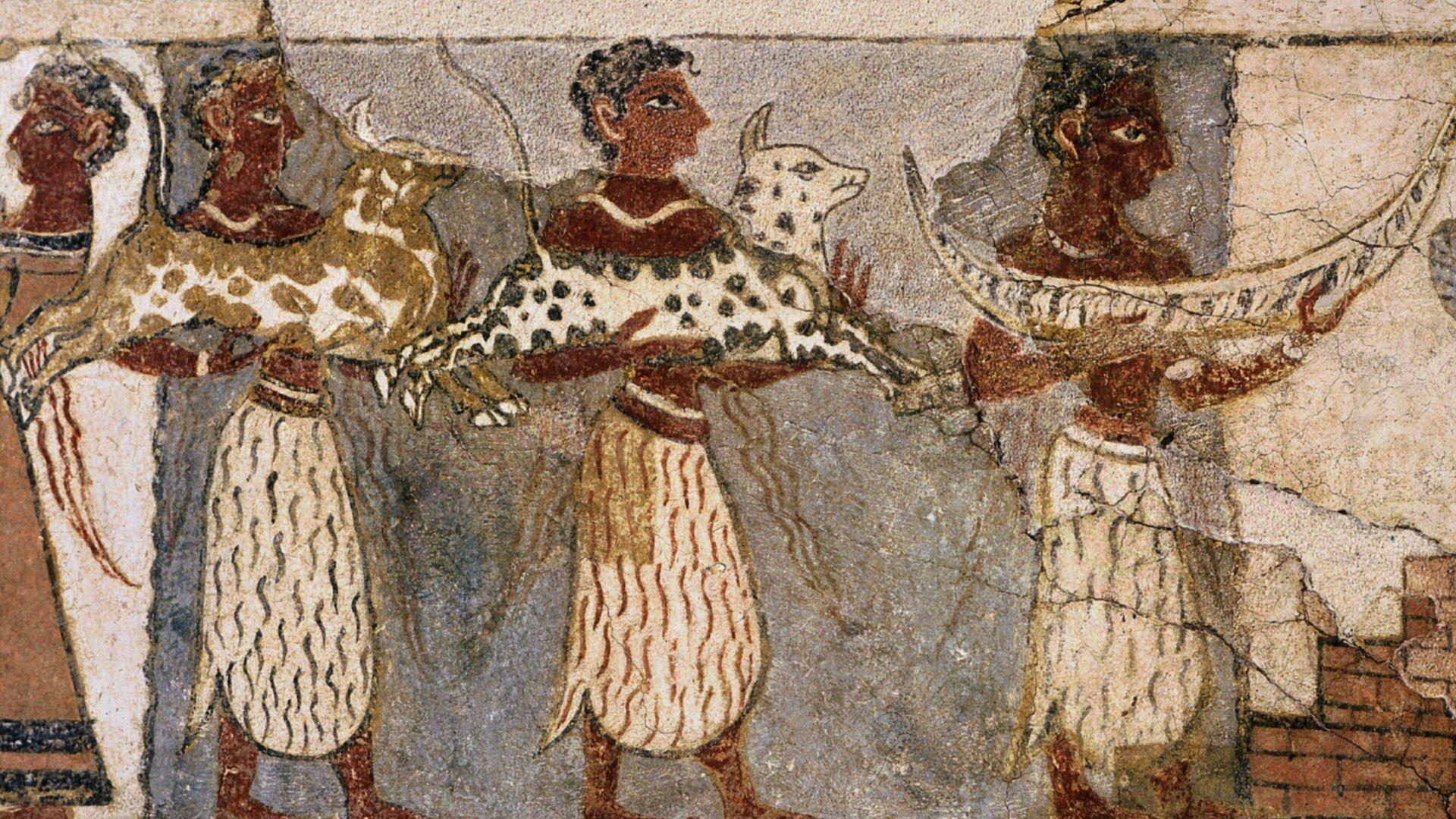
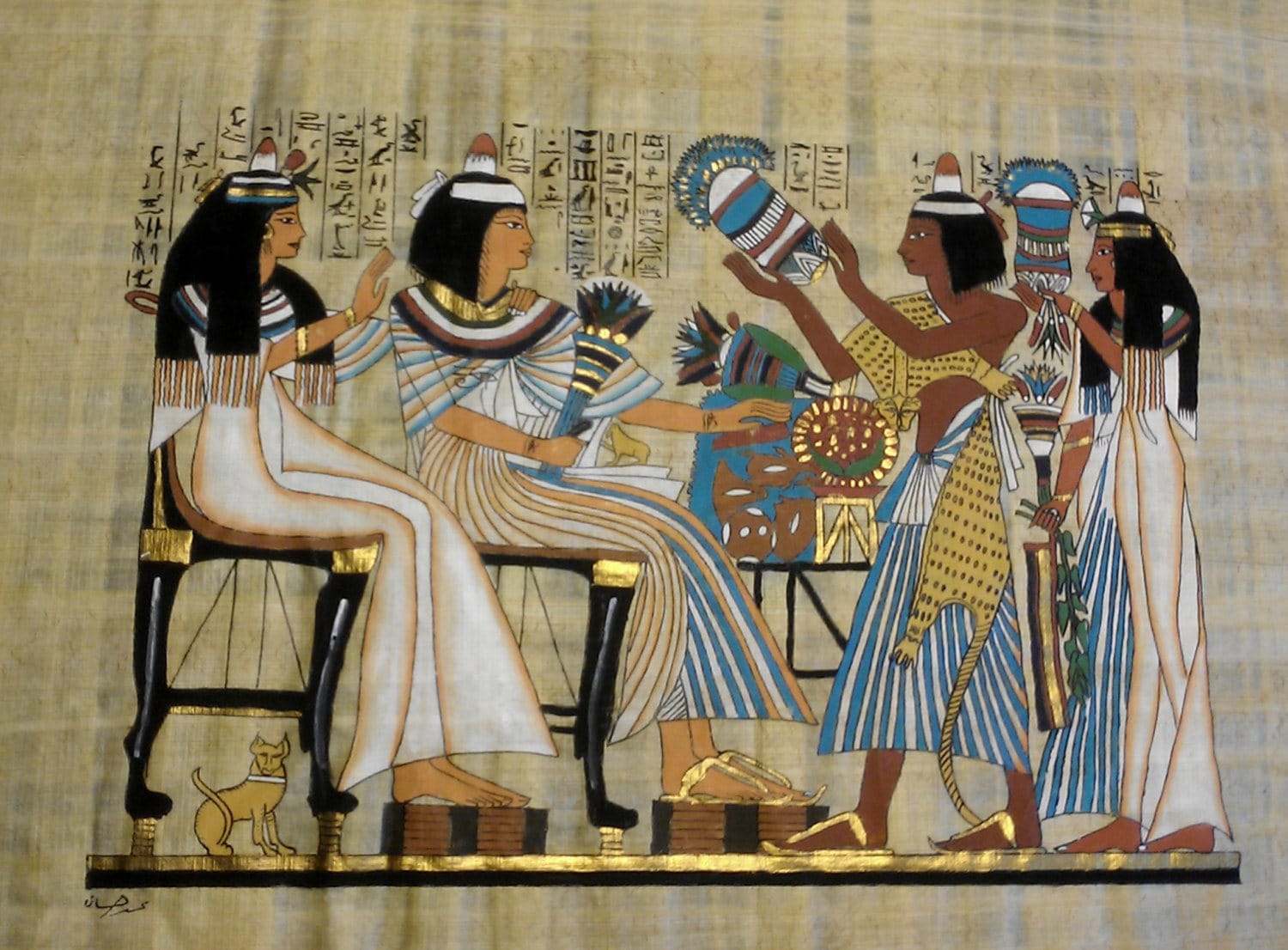





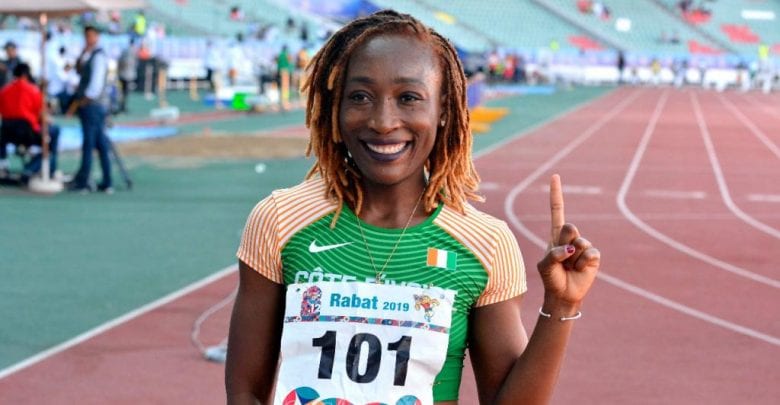
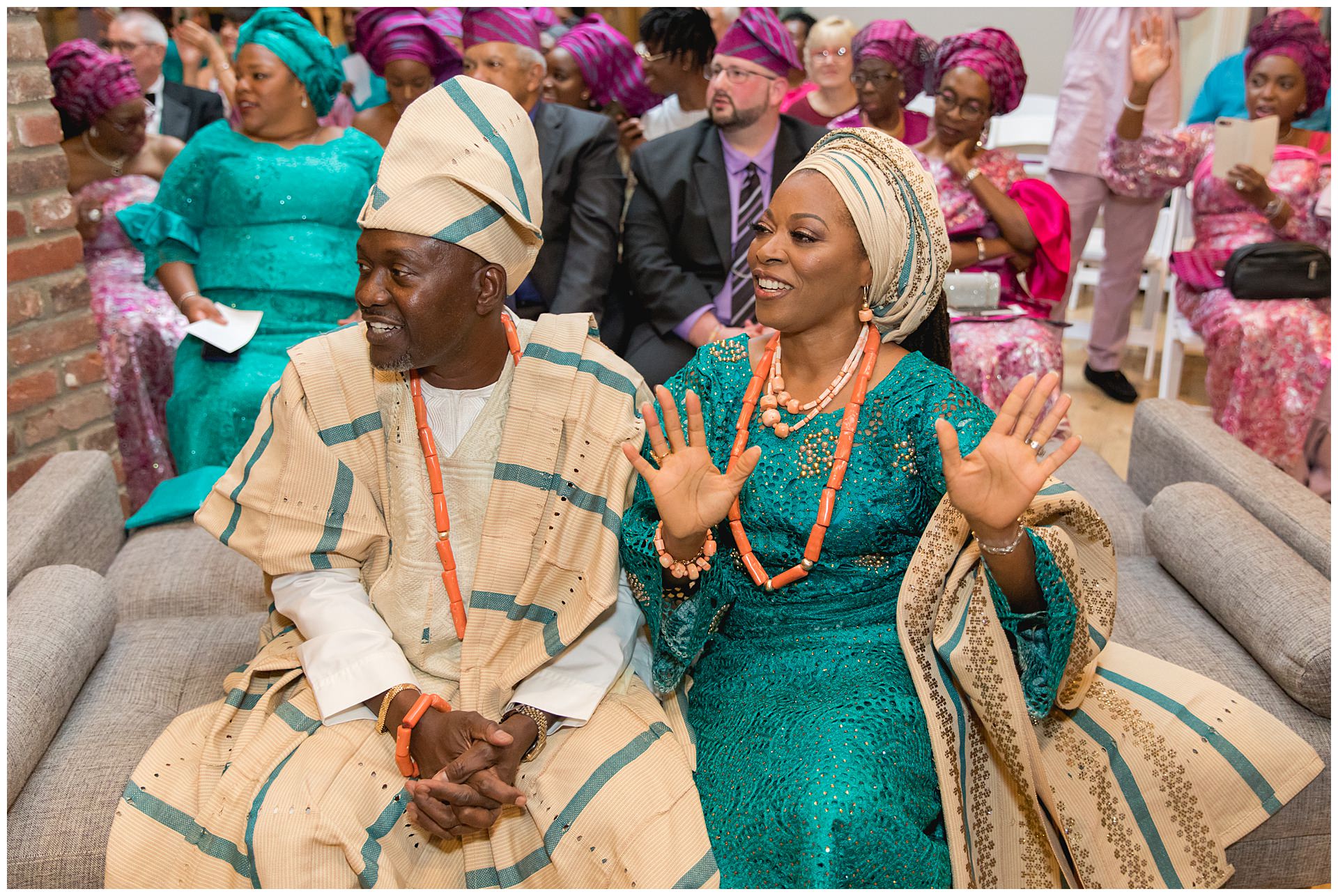

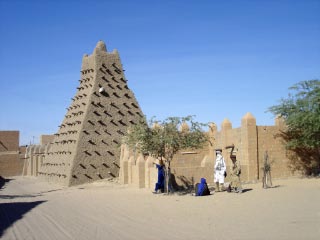


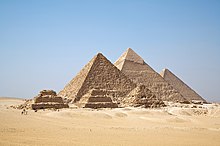


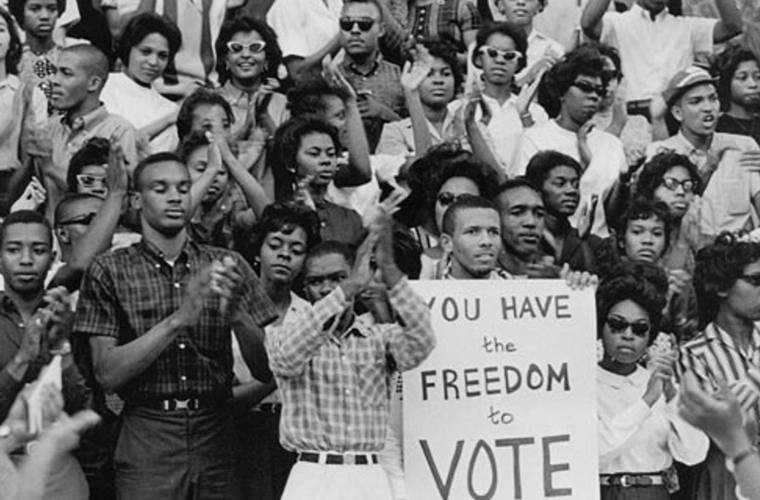
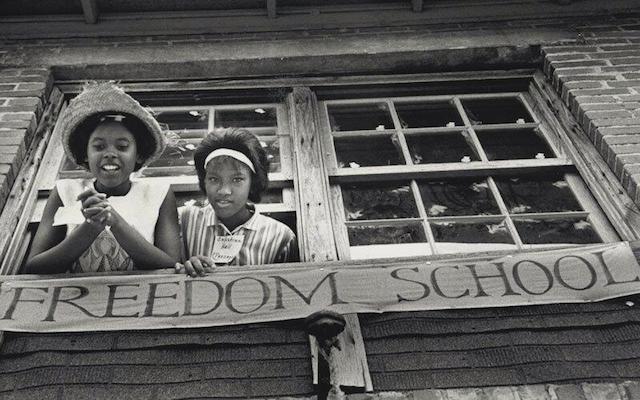

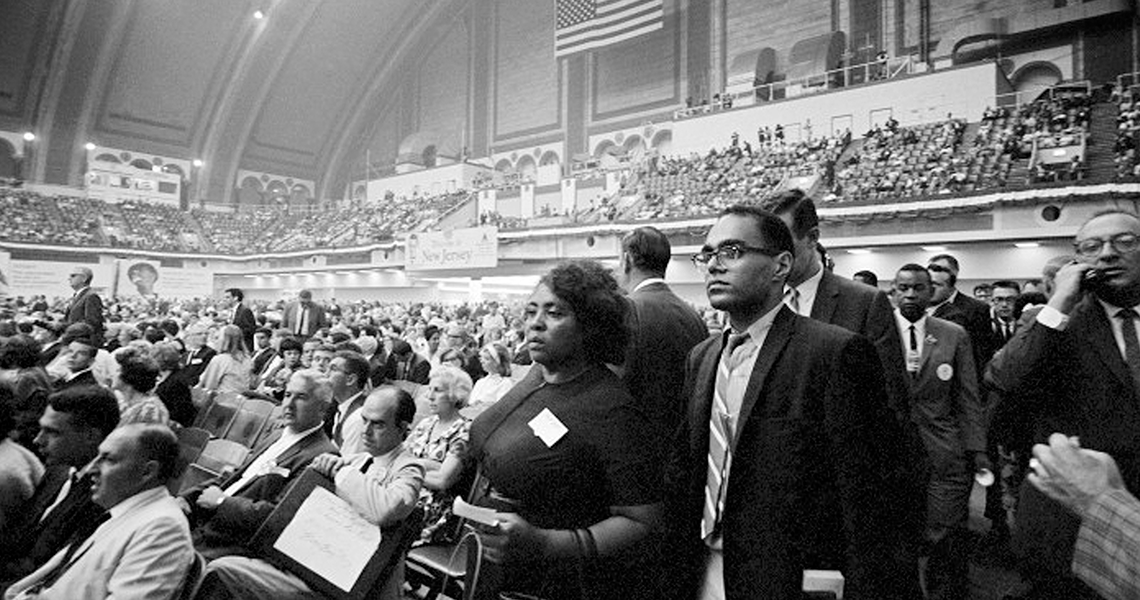

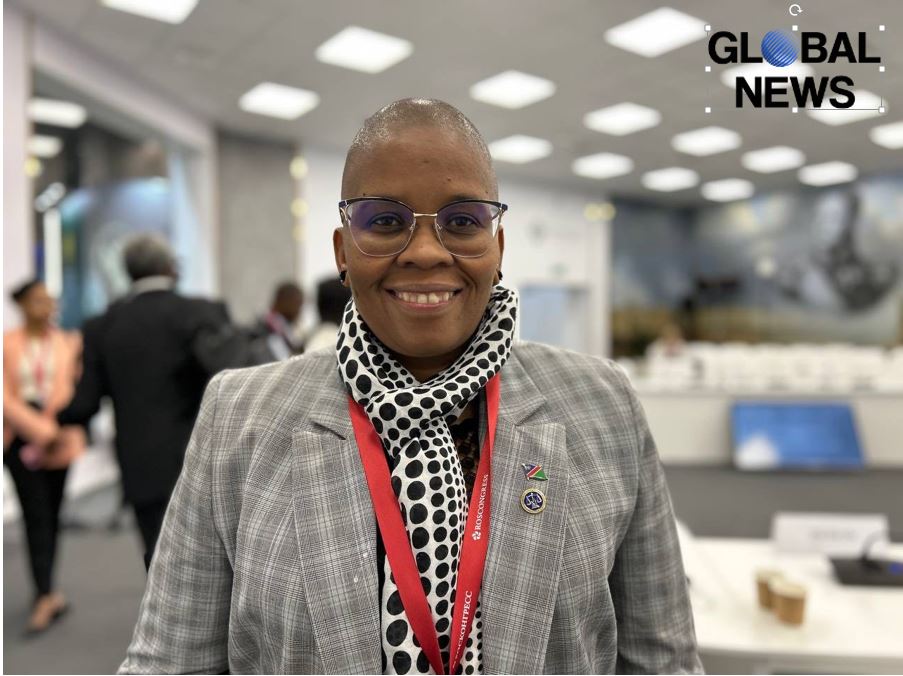
:no_upscale()/cdn.vox-cdn.com/uploads/chorus_asset/file/7116535/AC-20160914-NMAAHC-17828.0.jpg)



